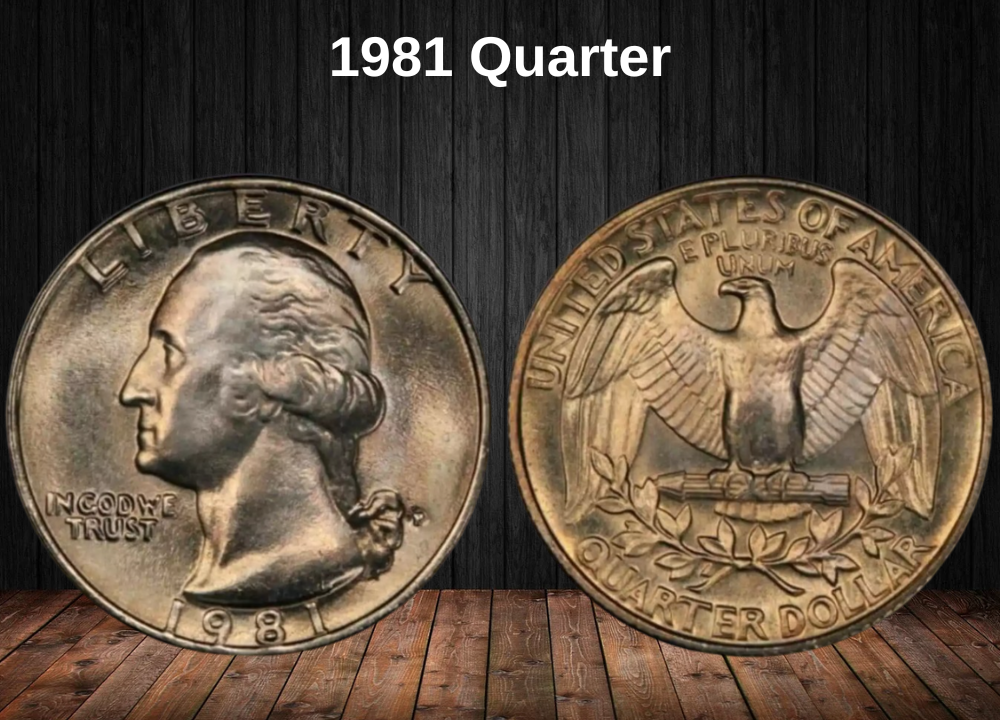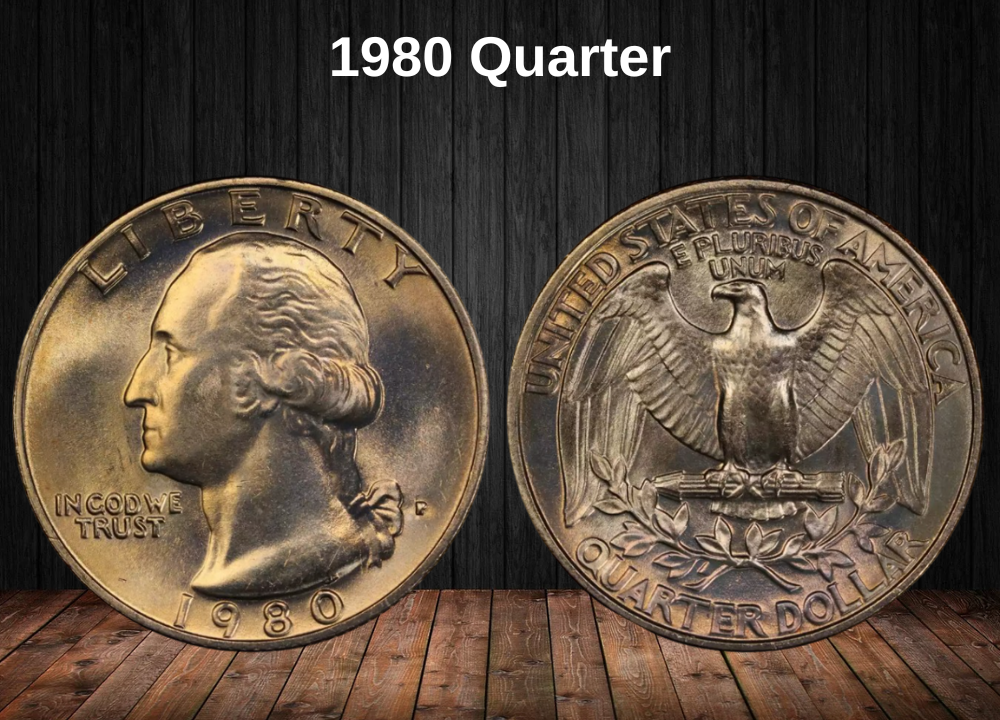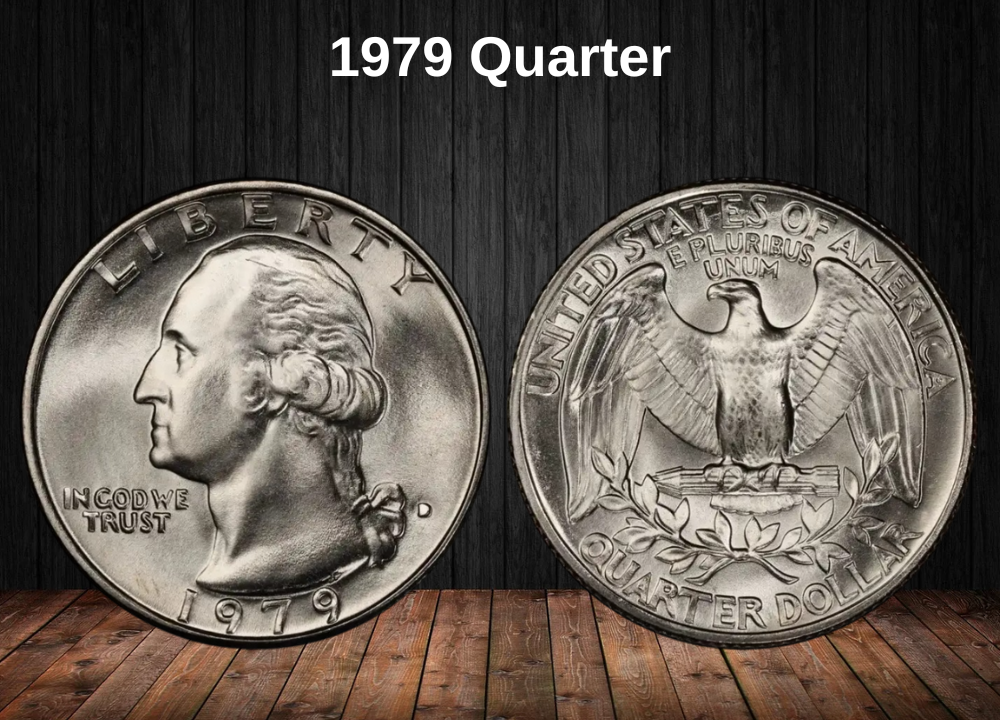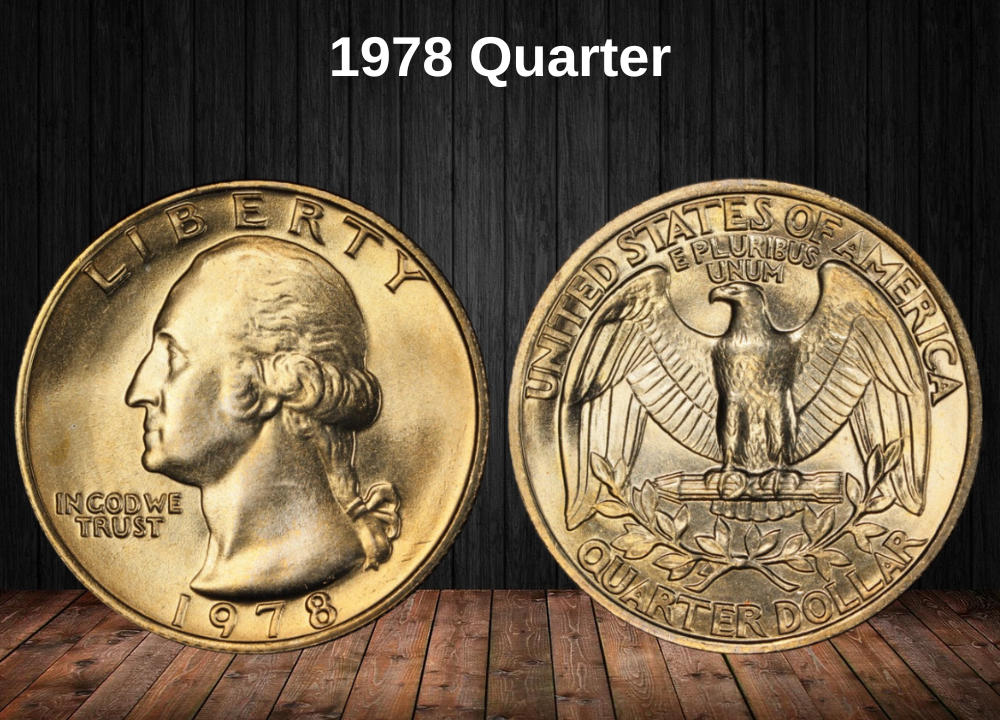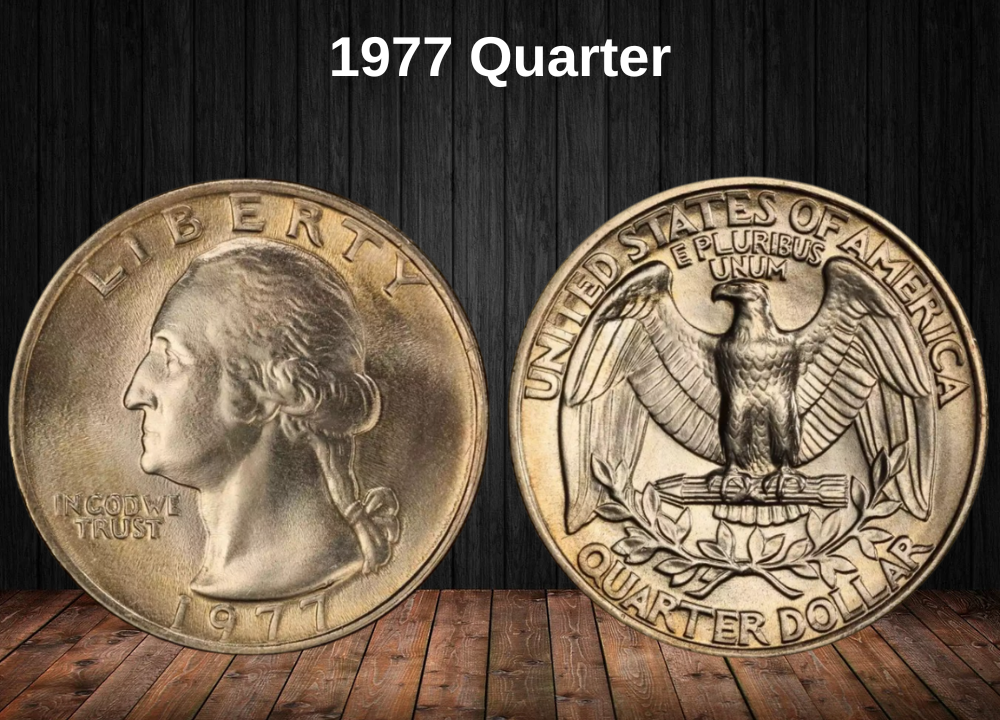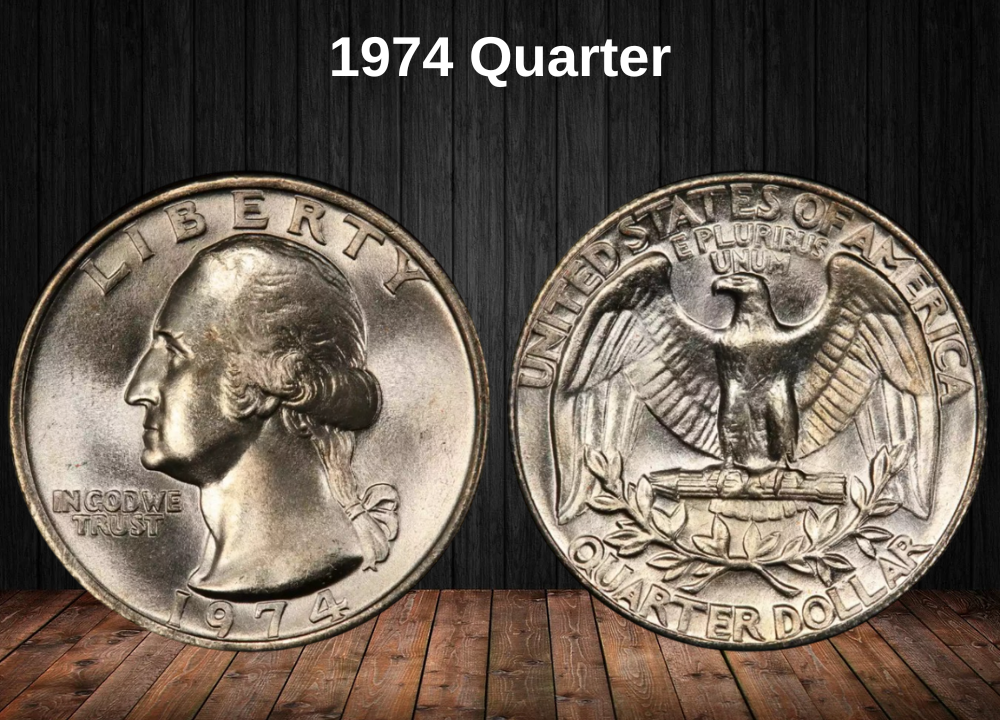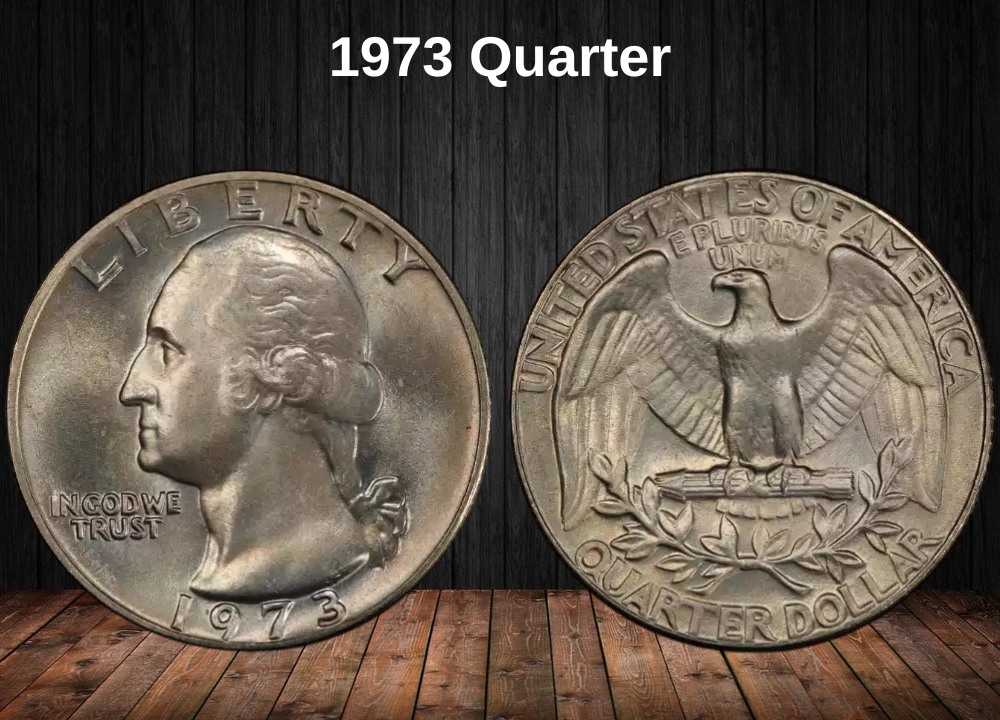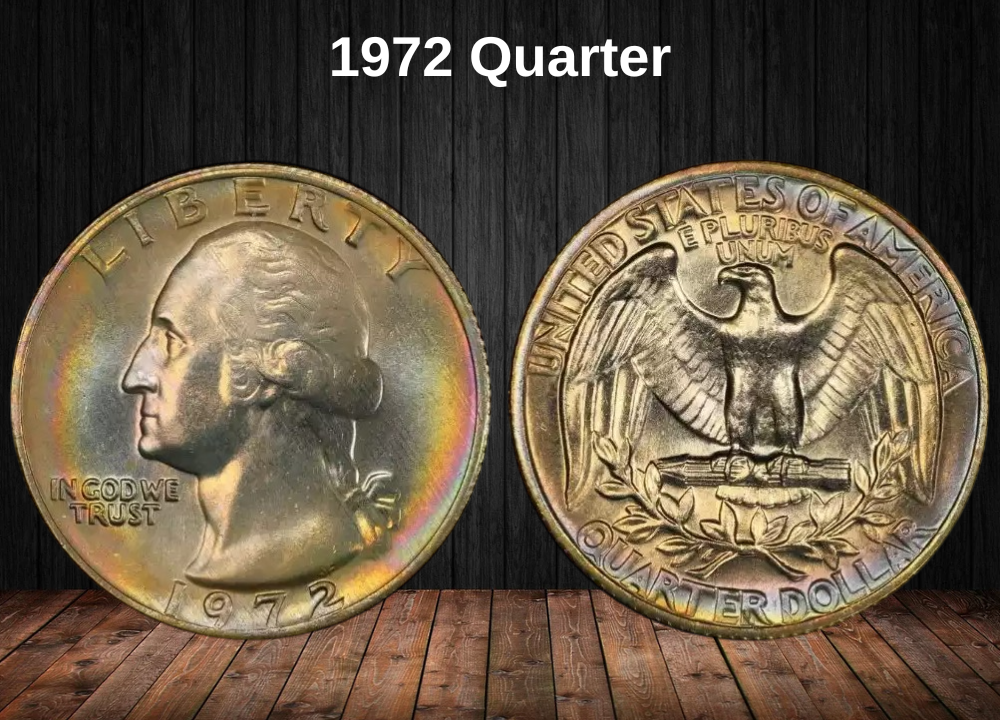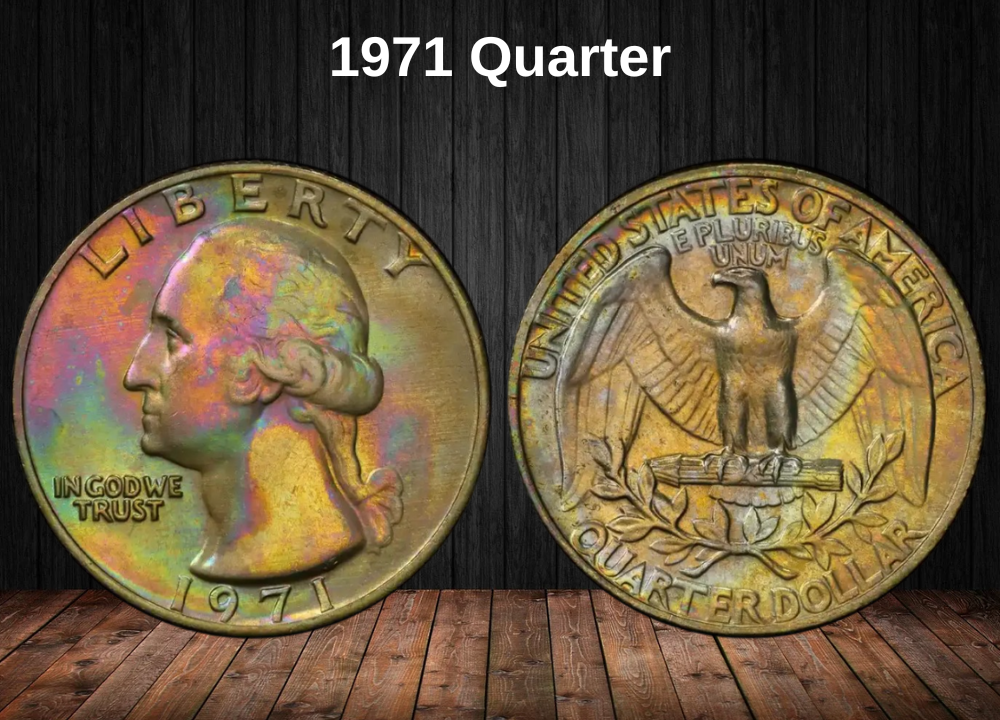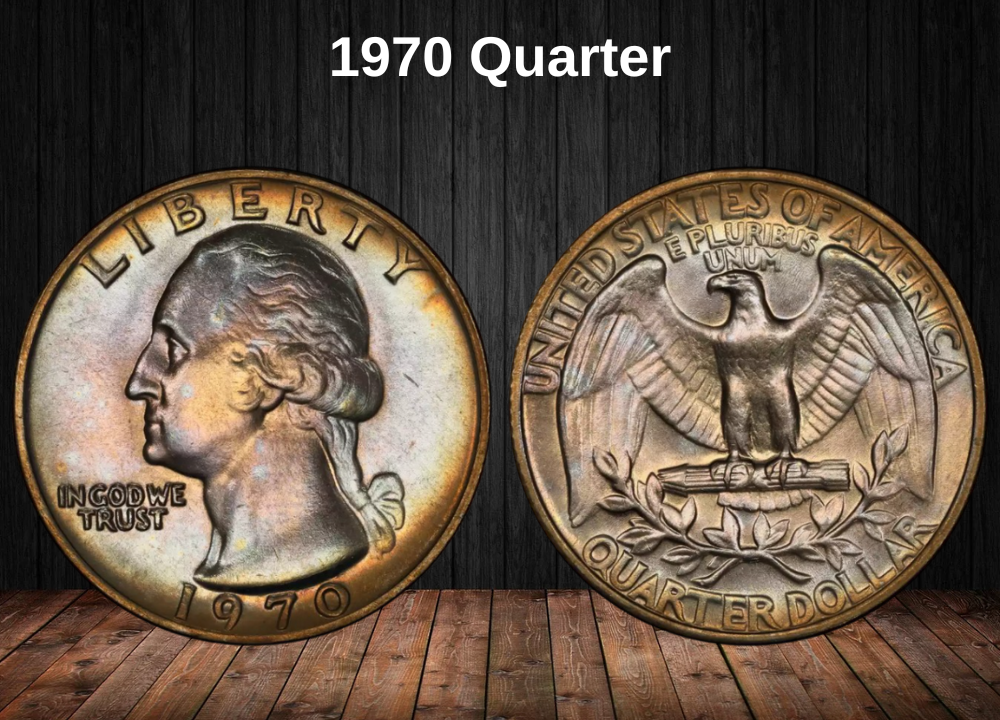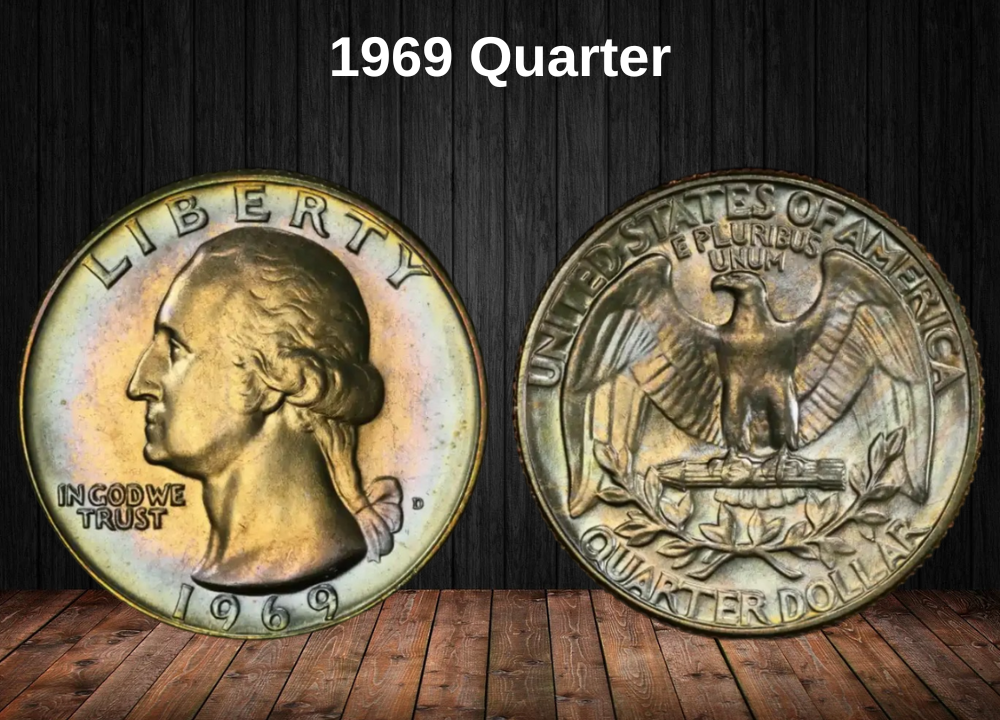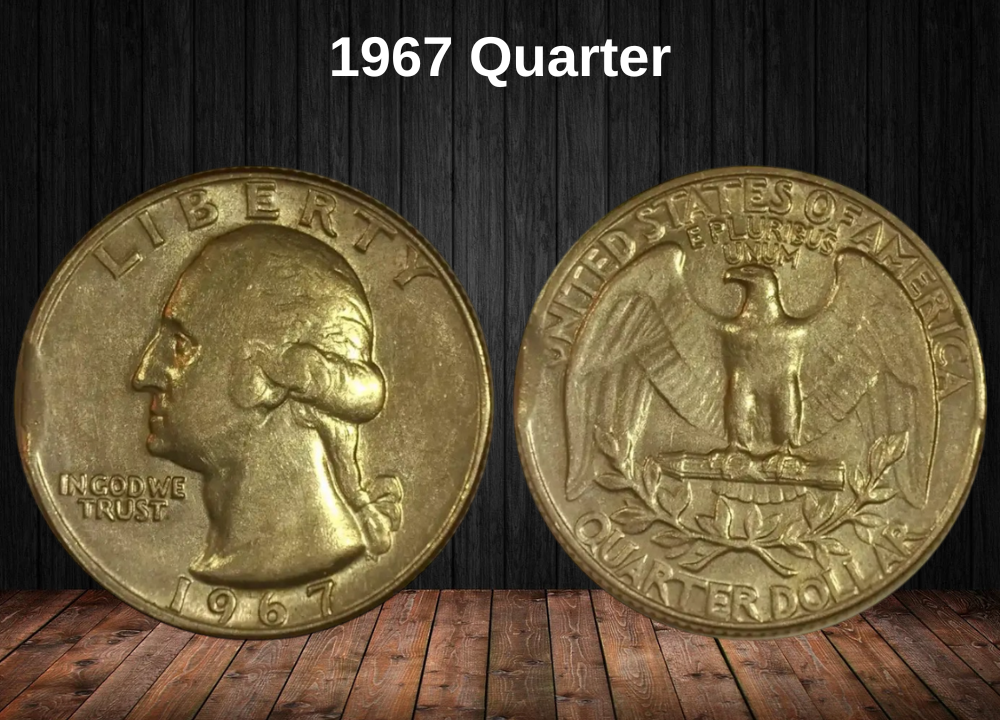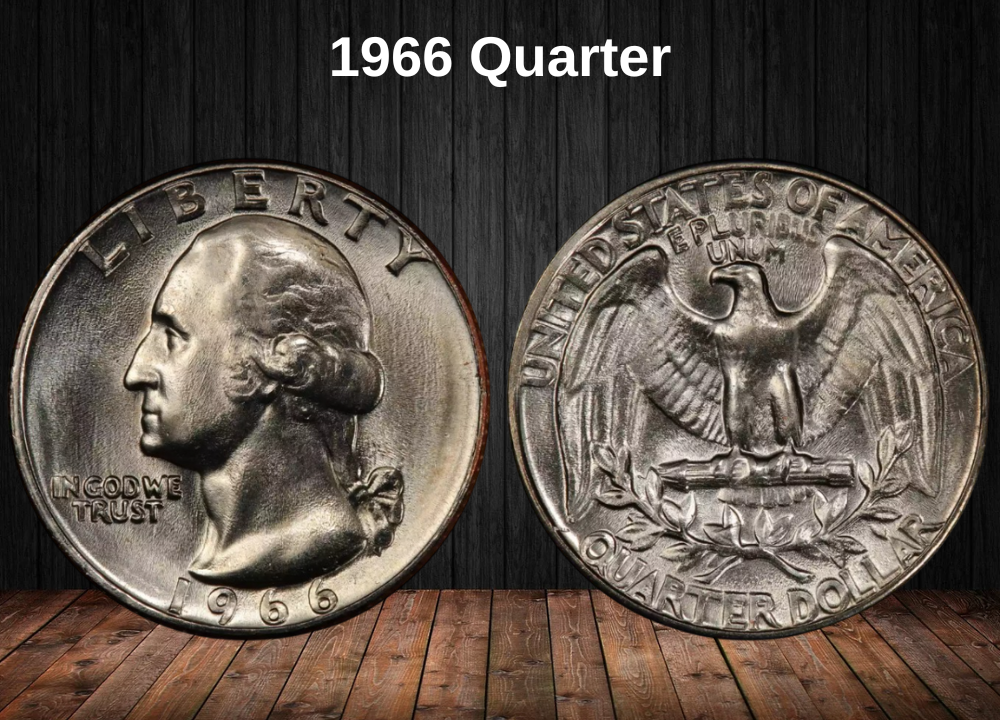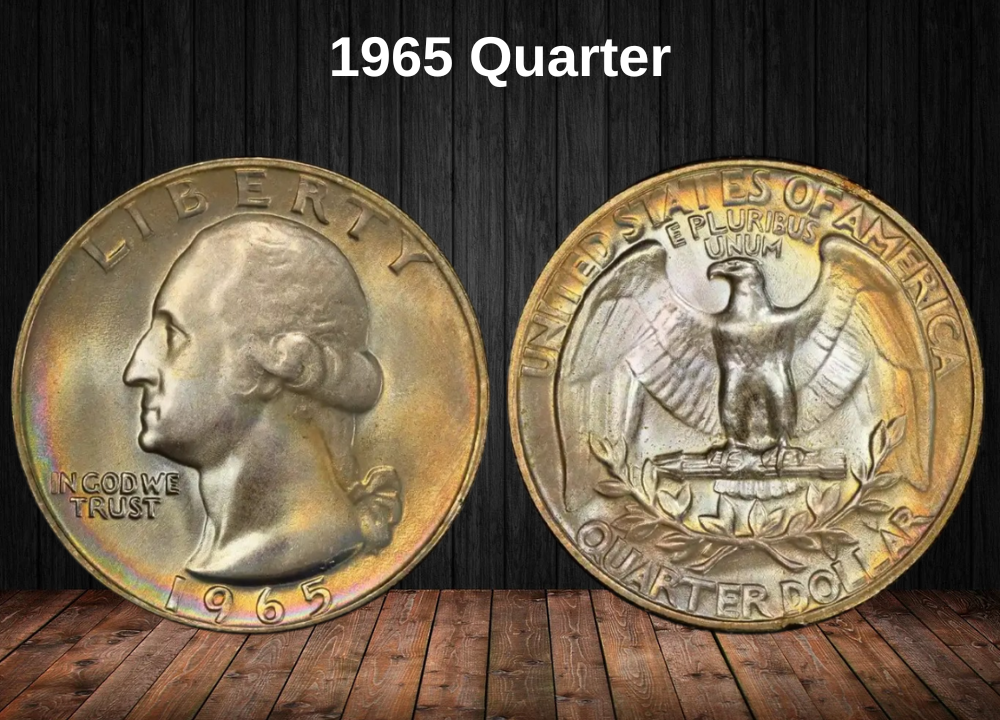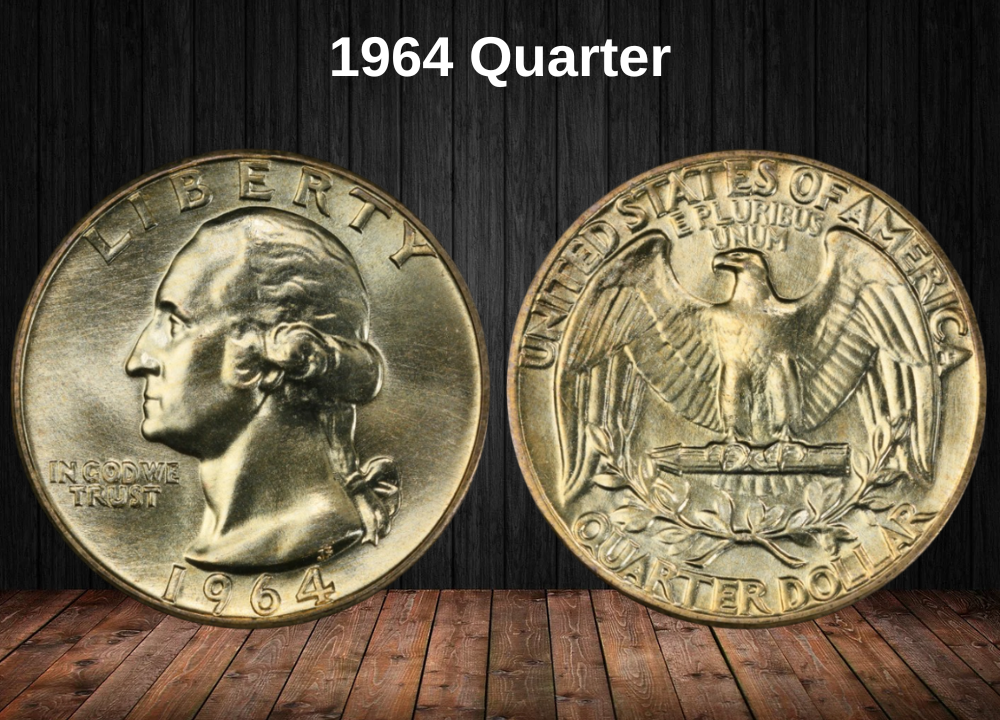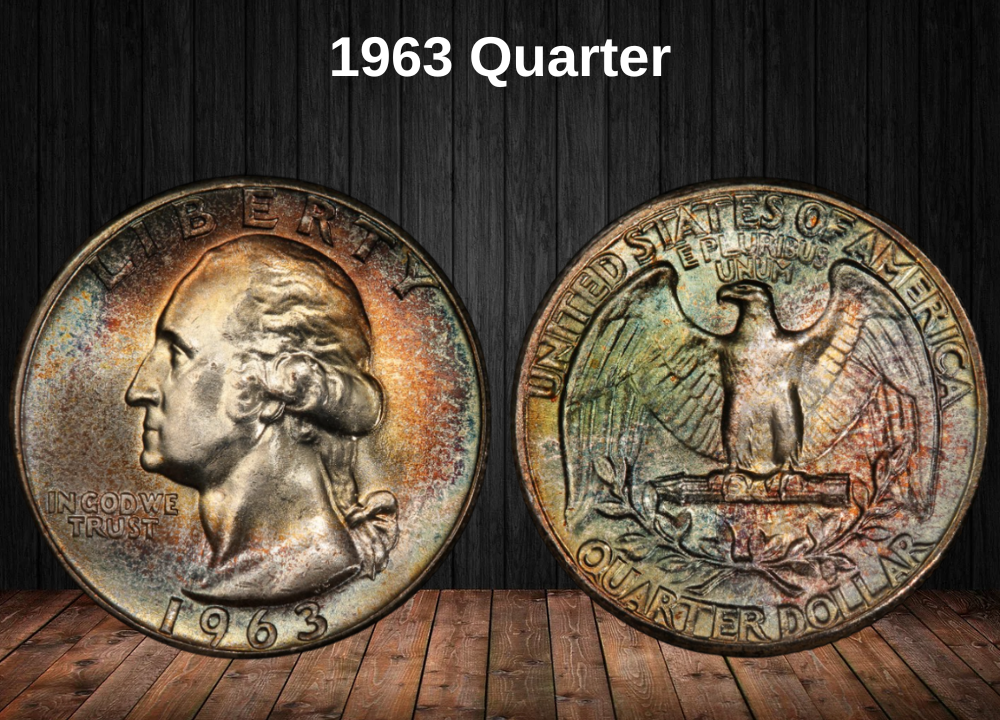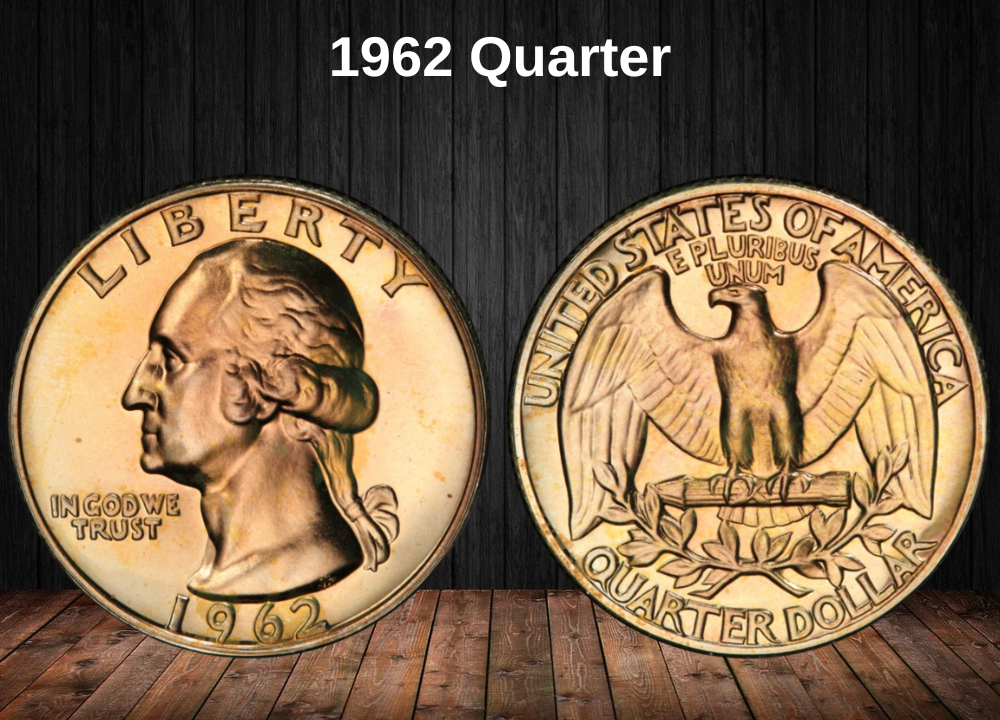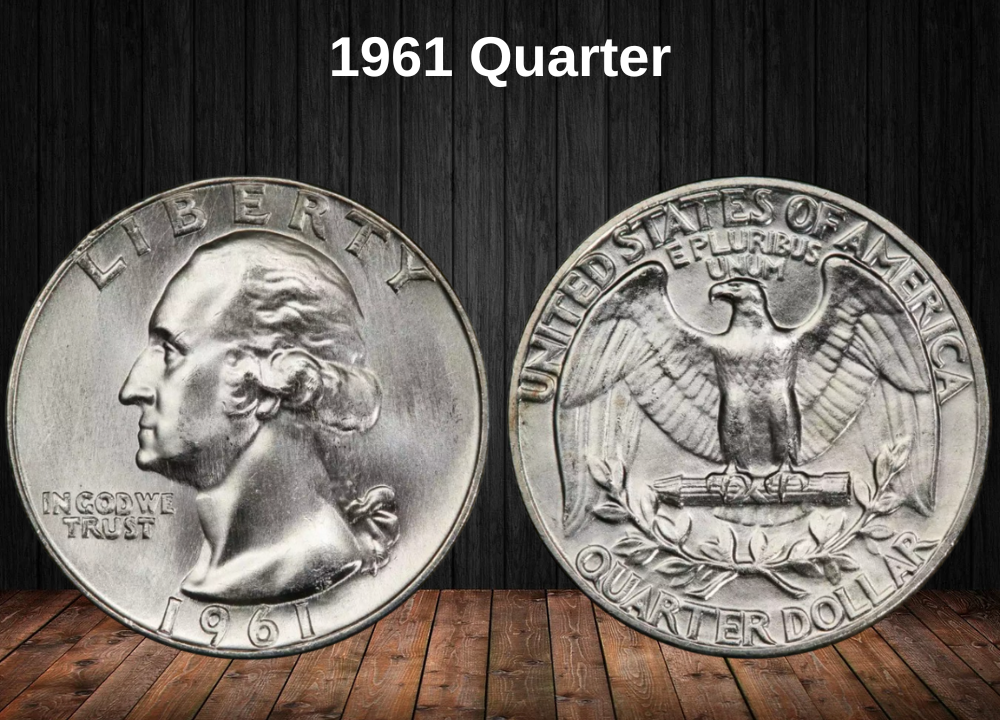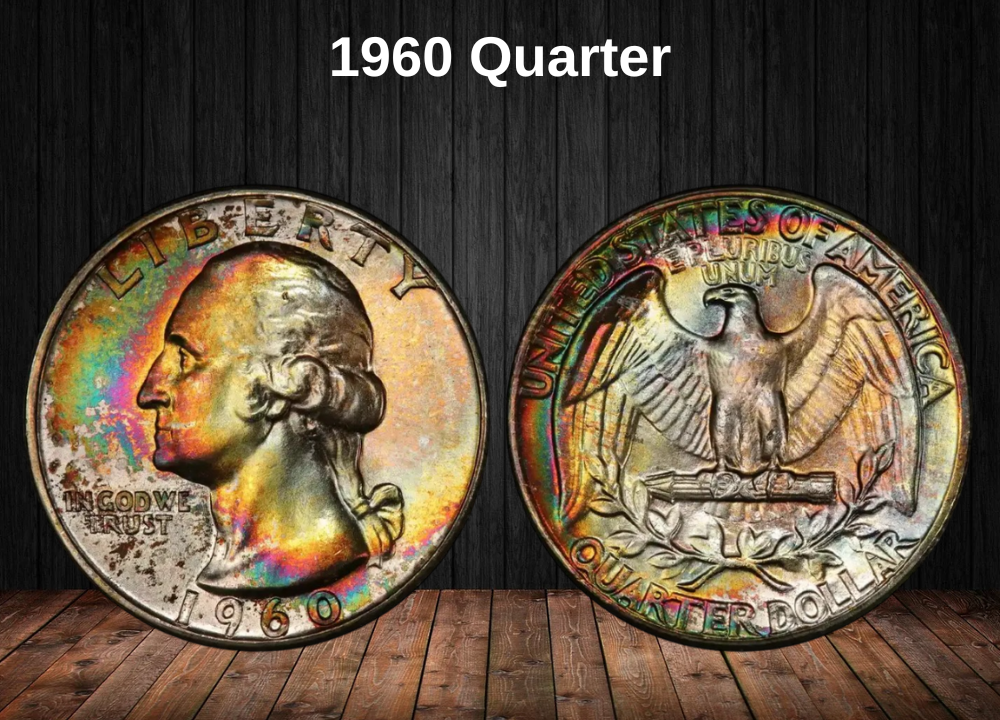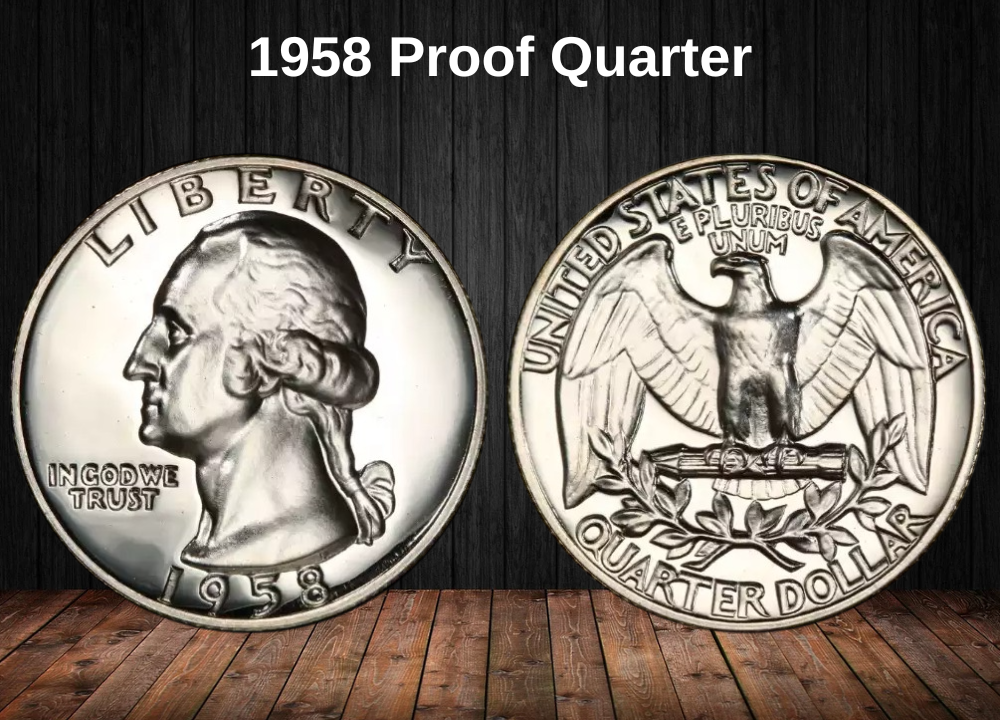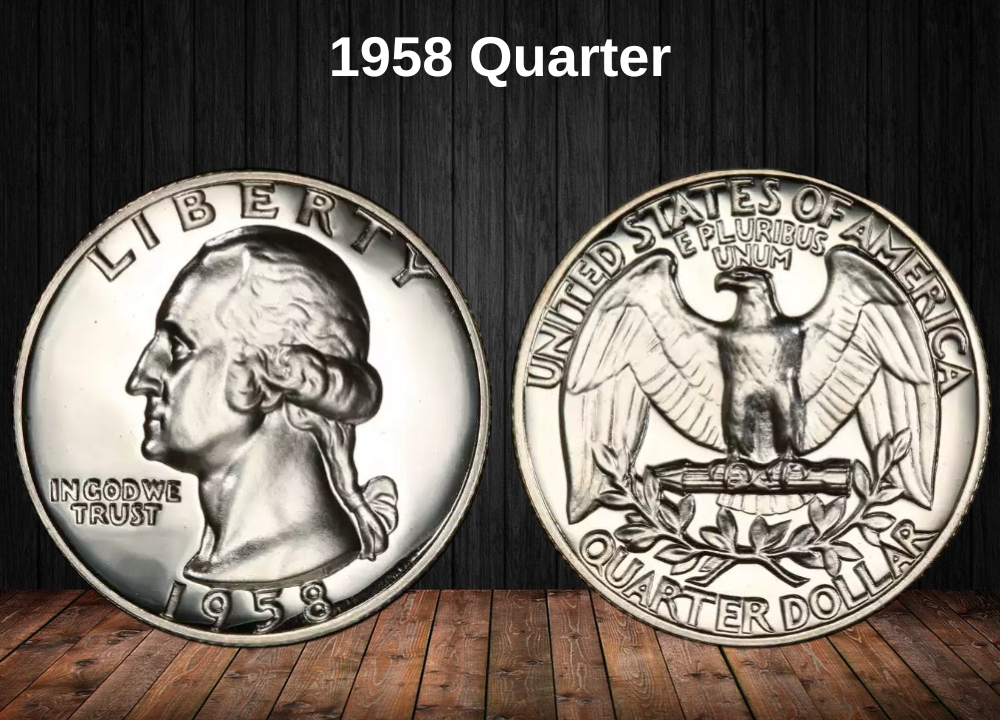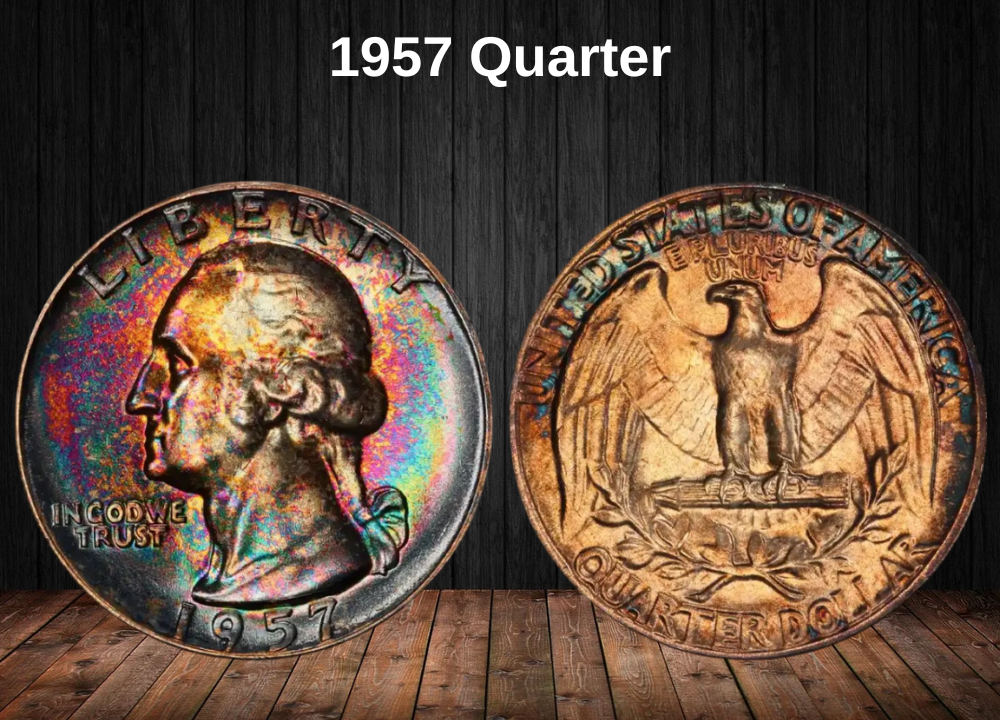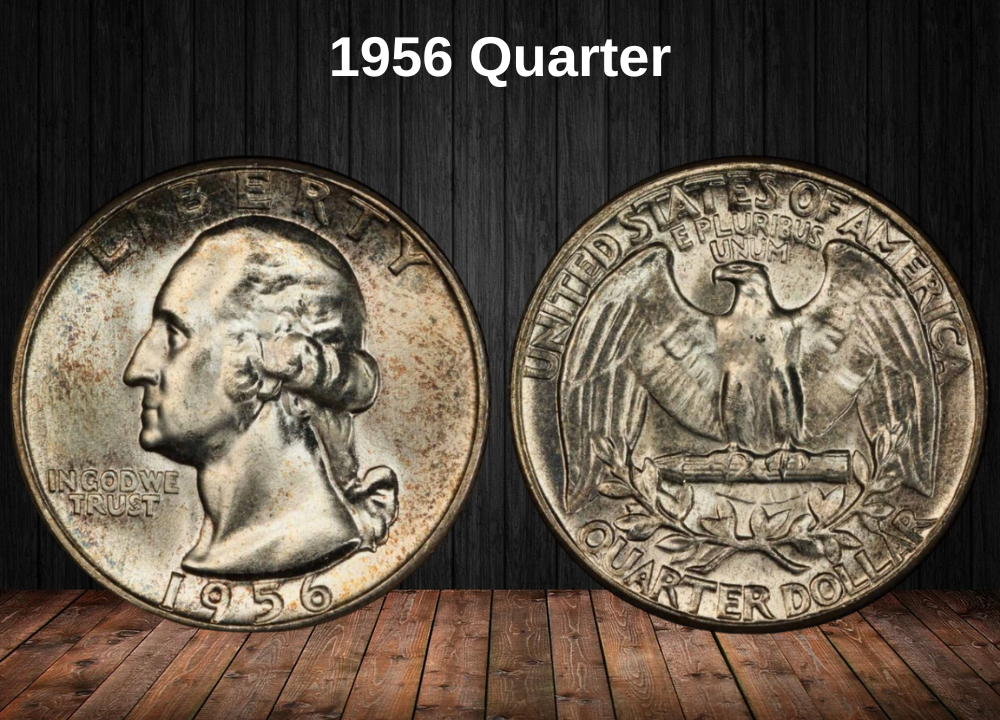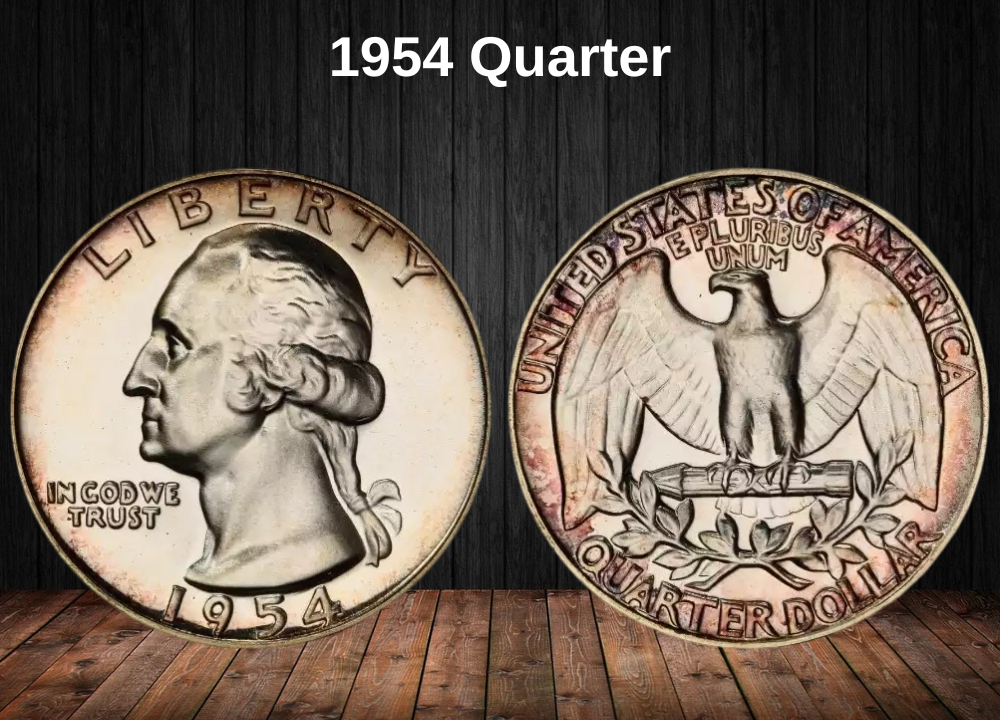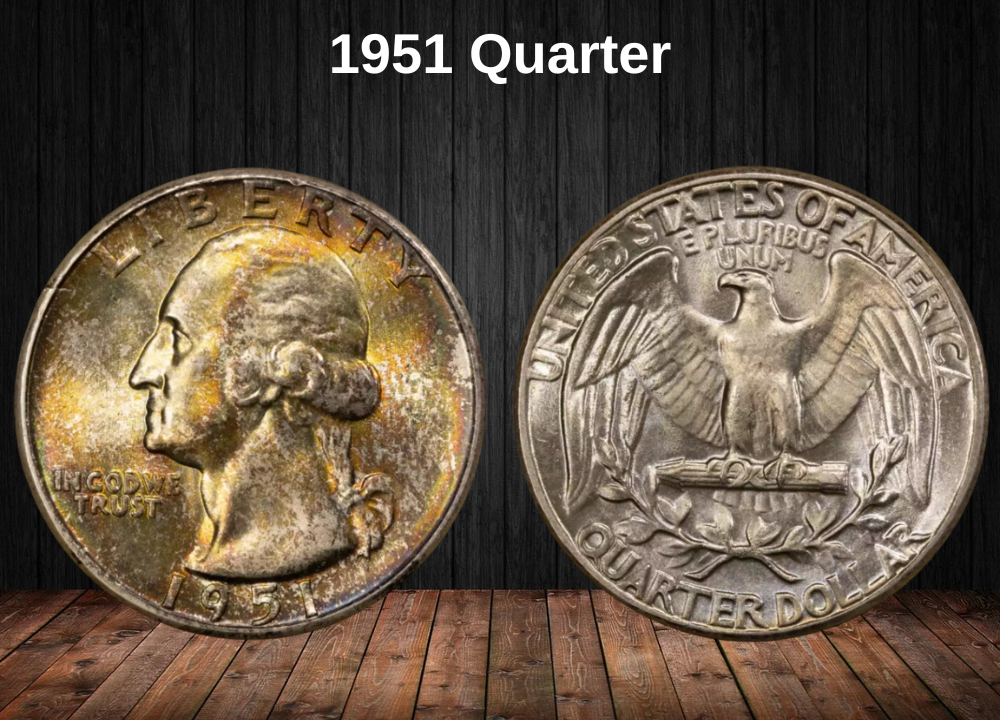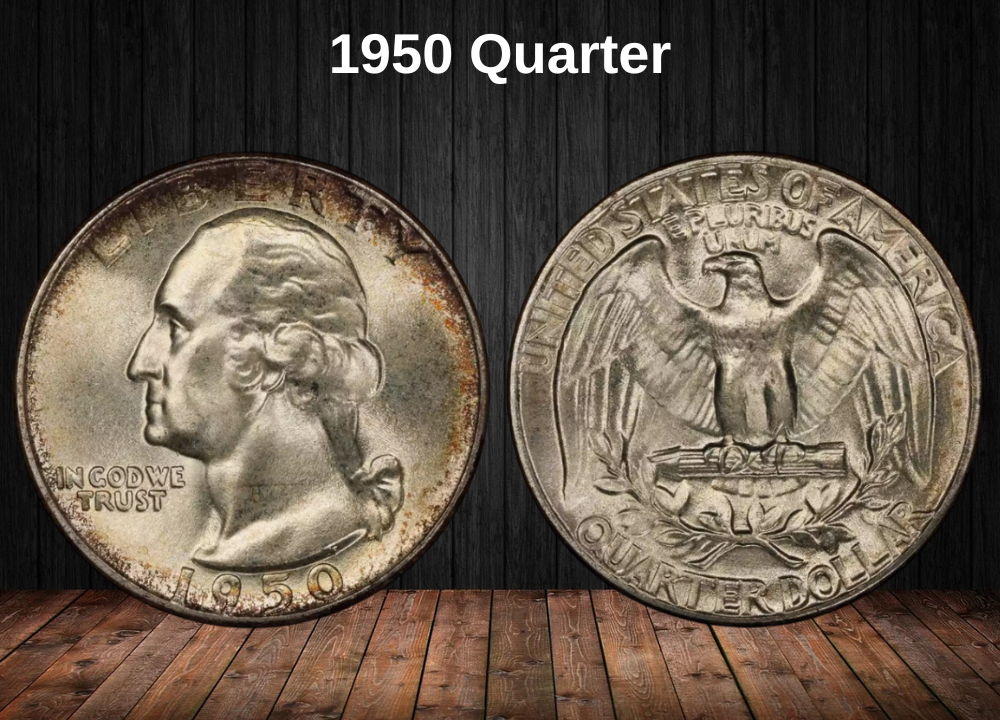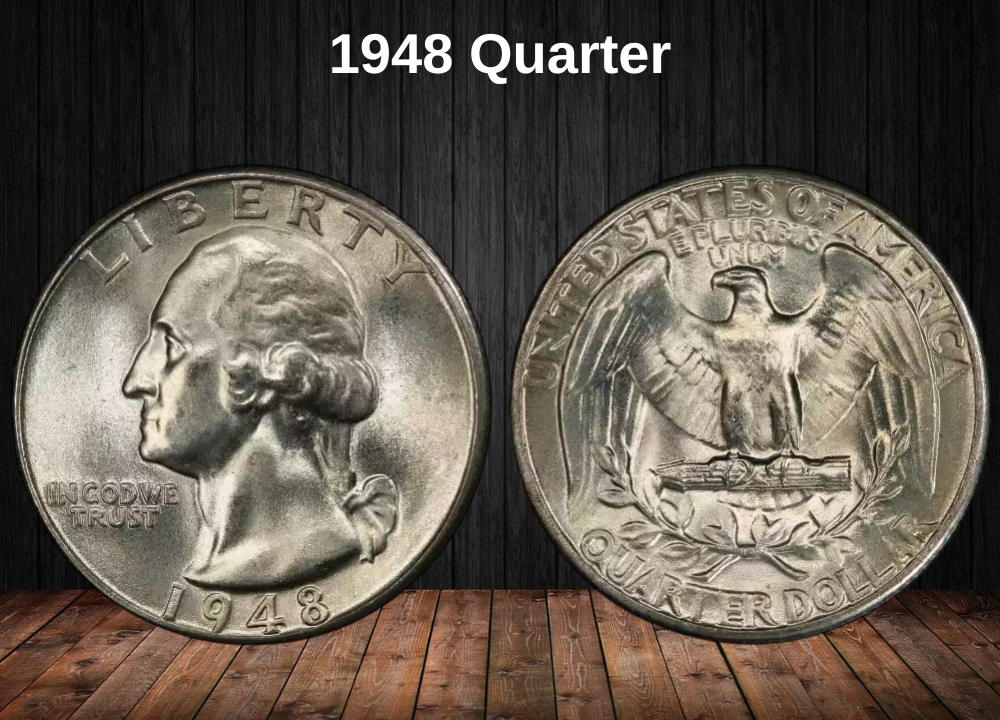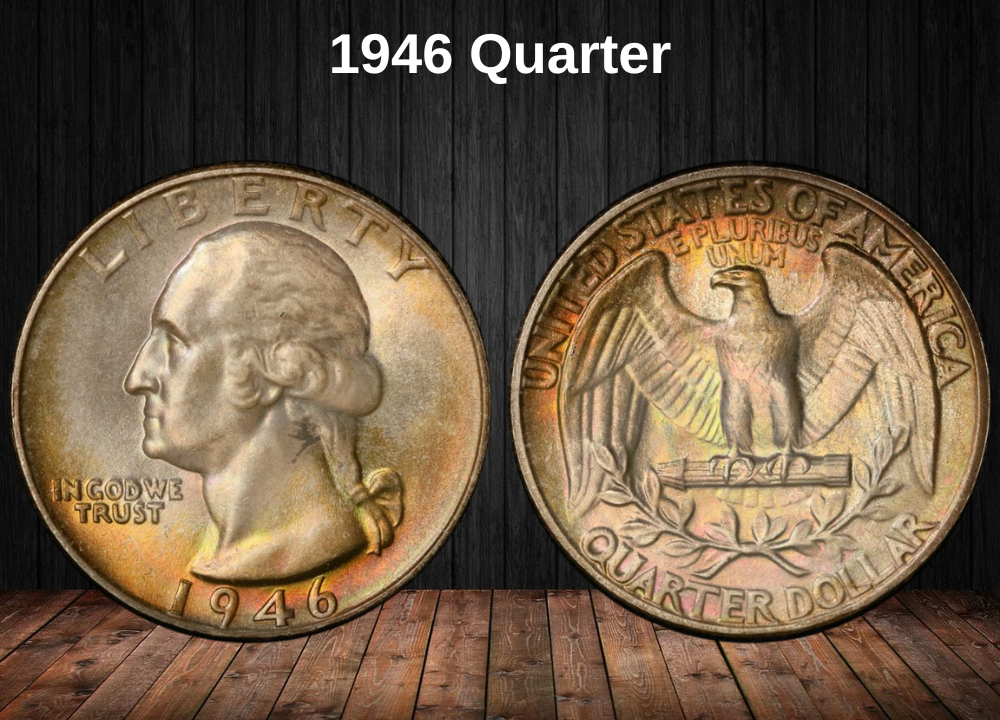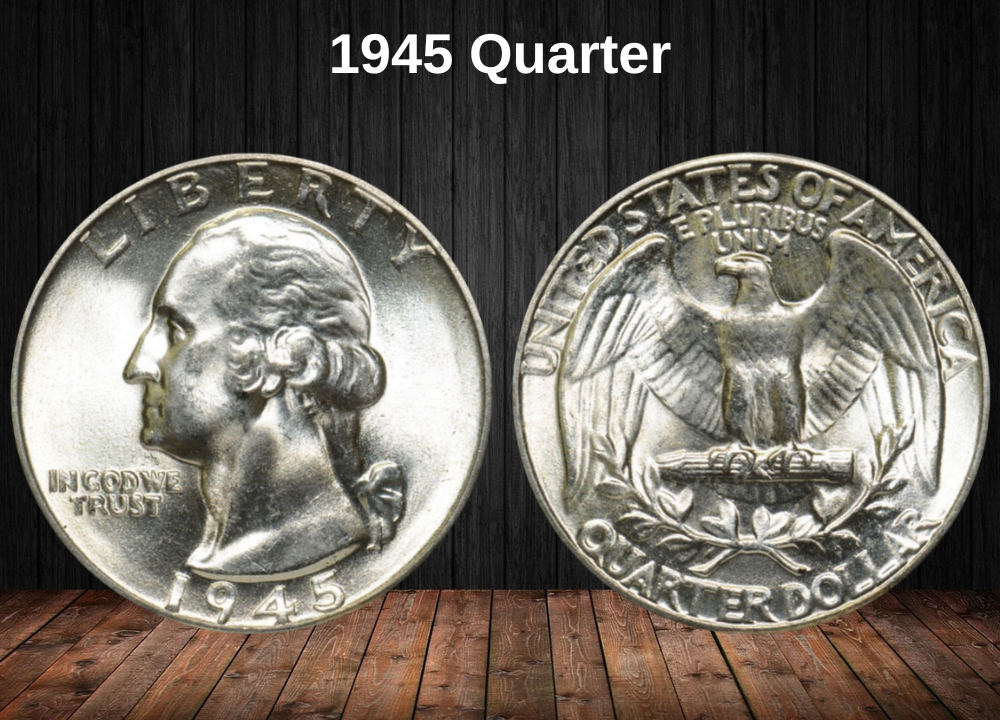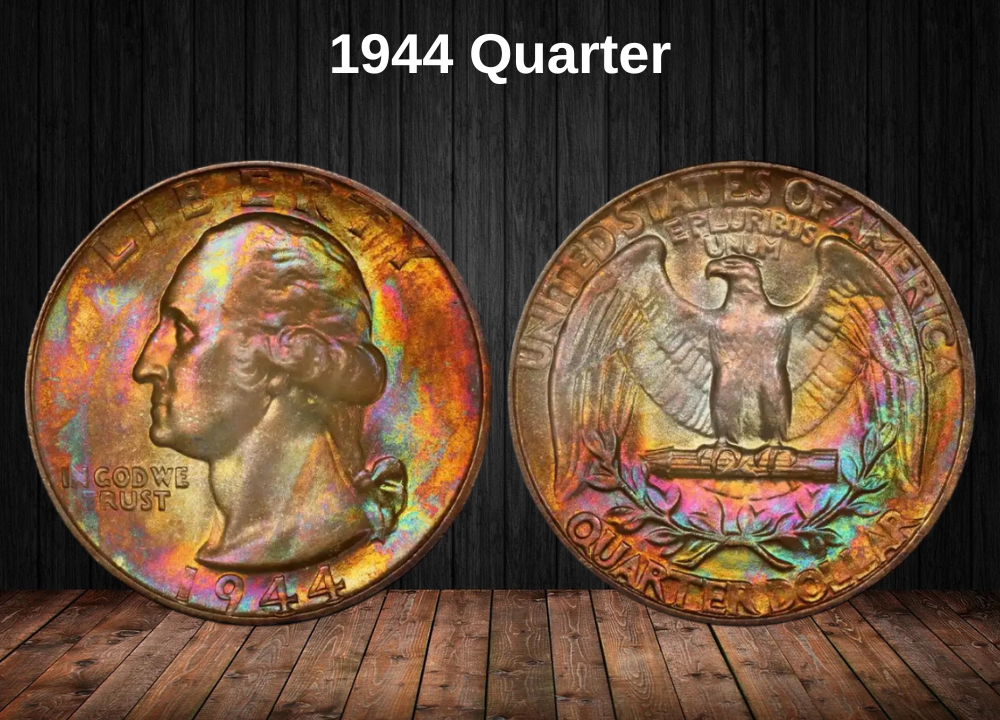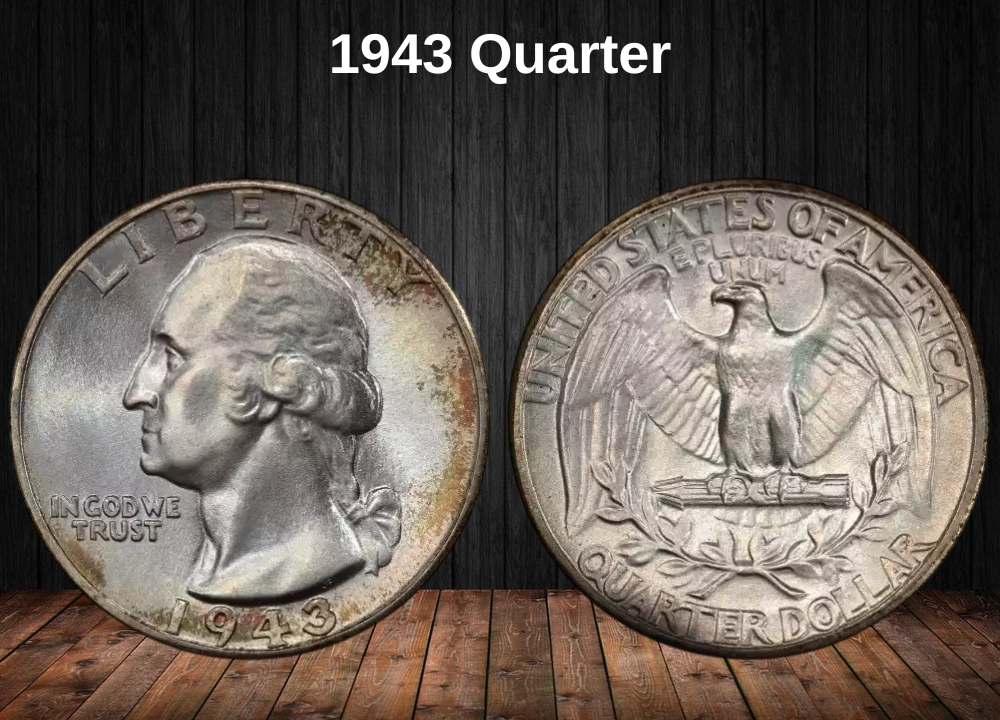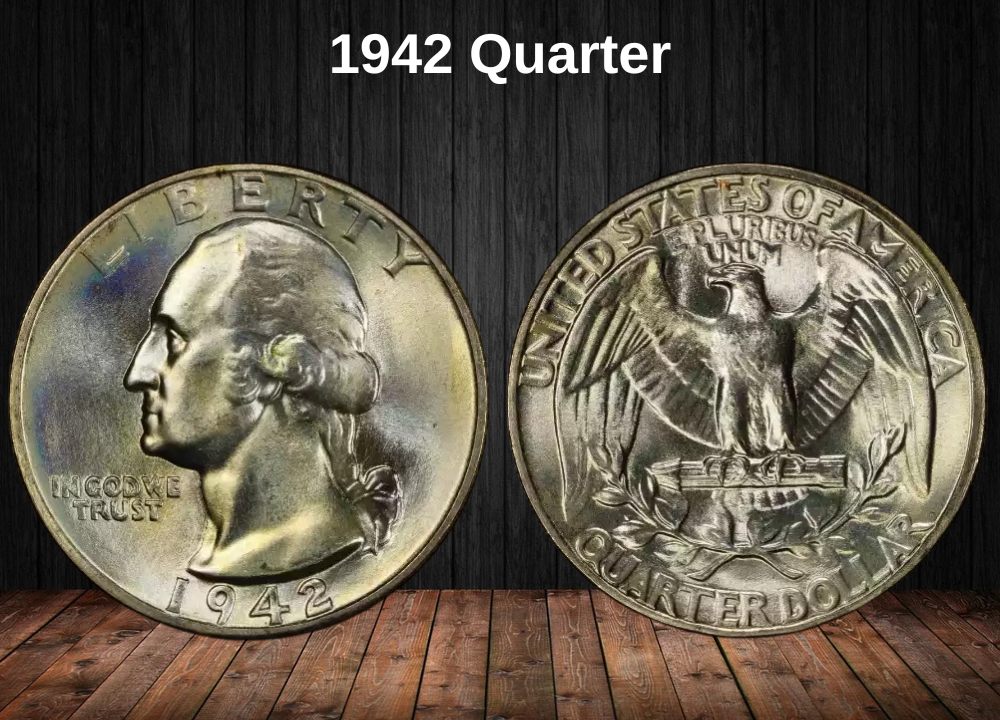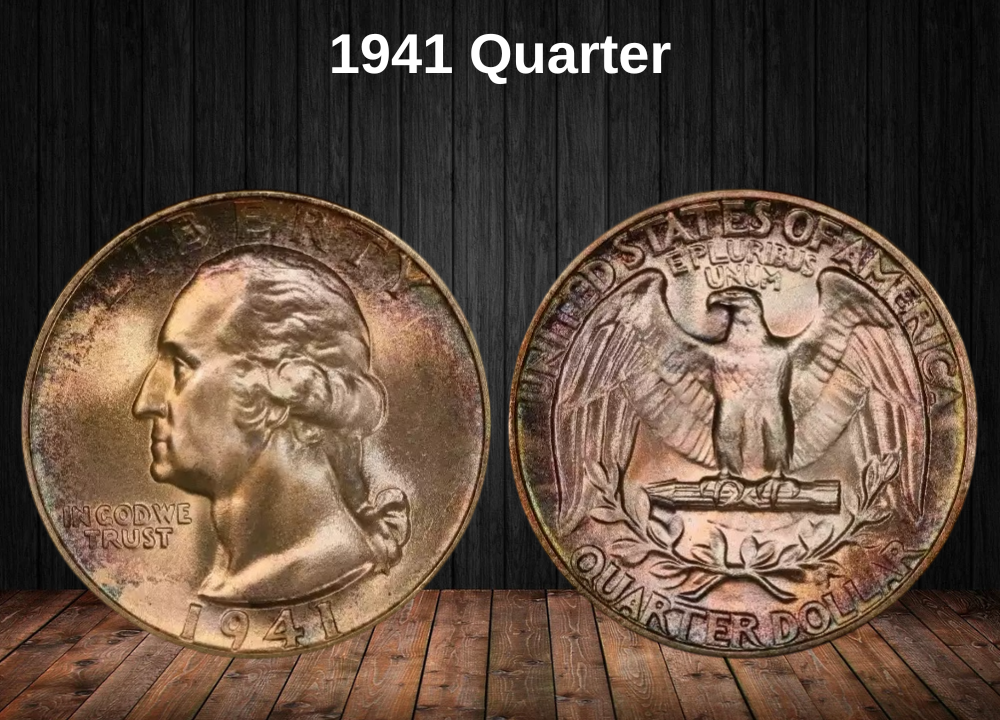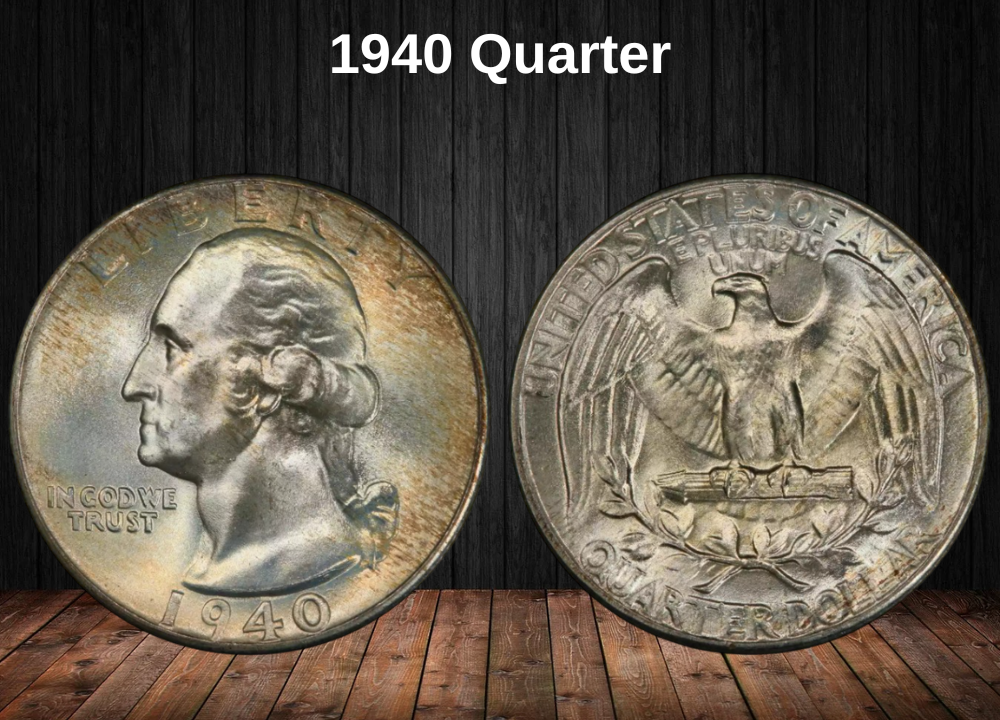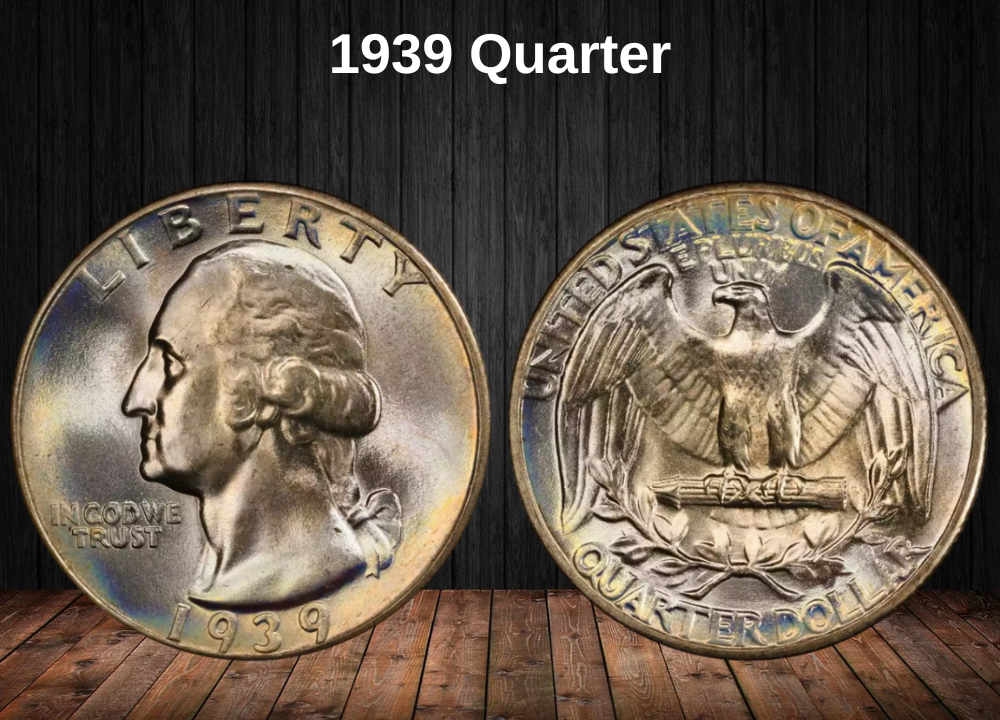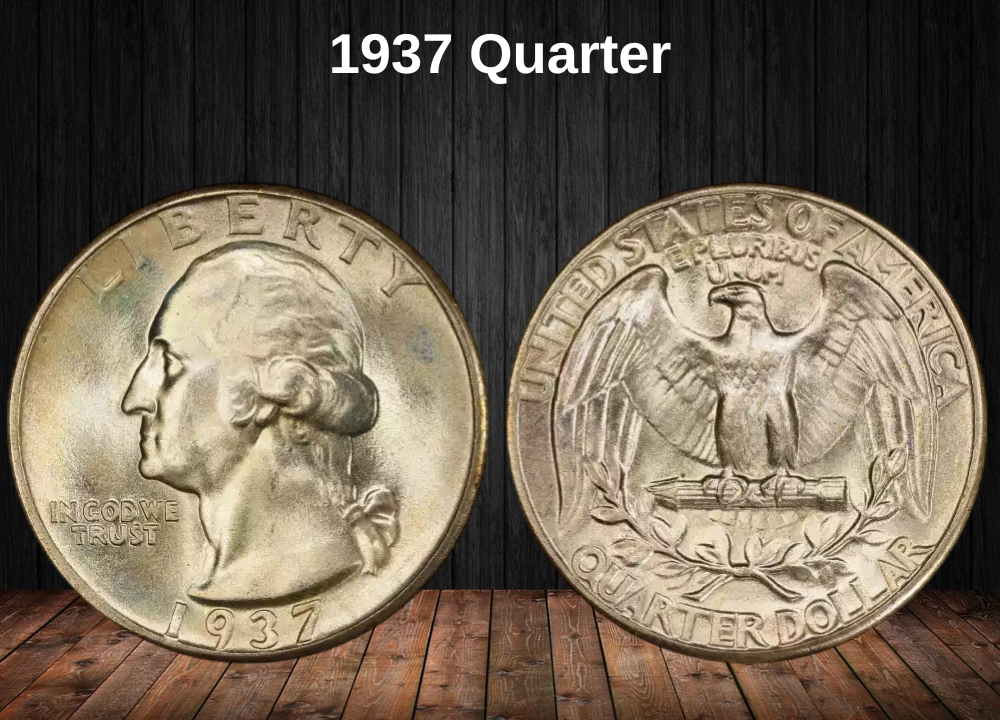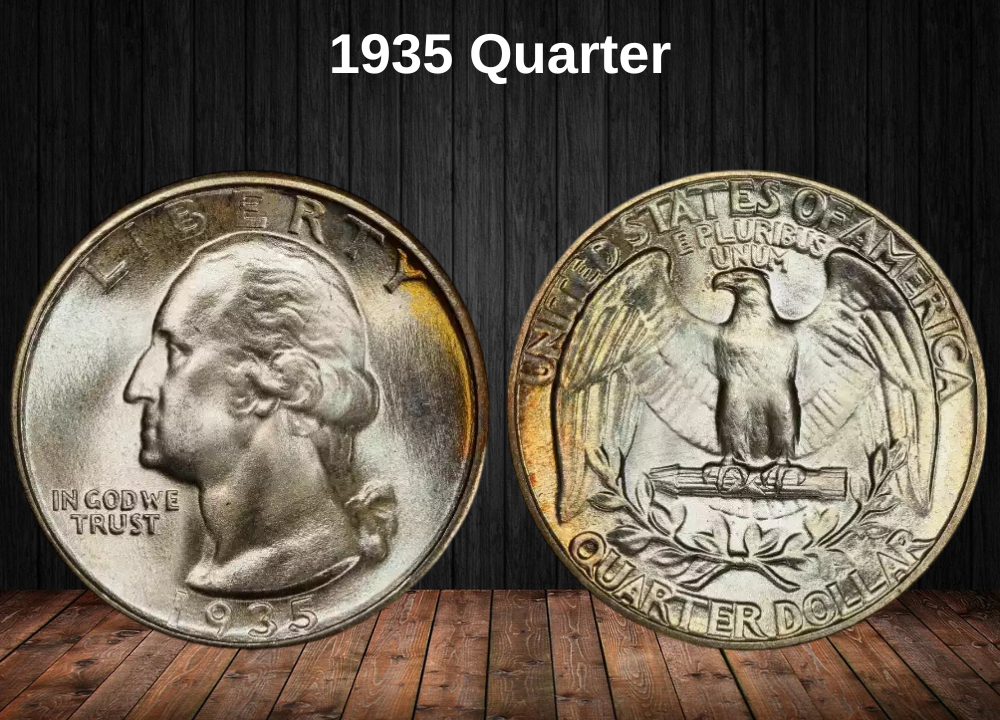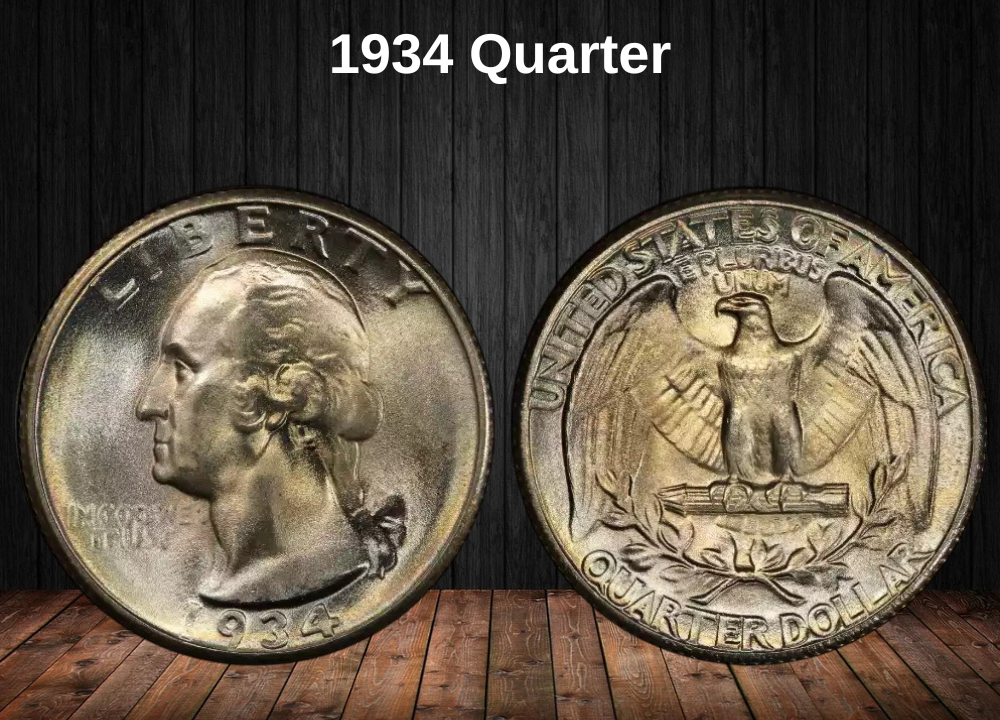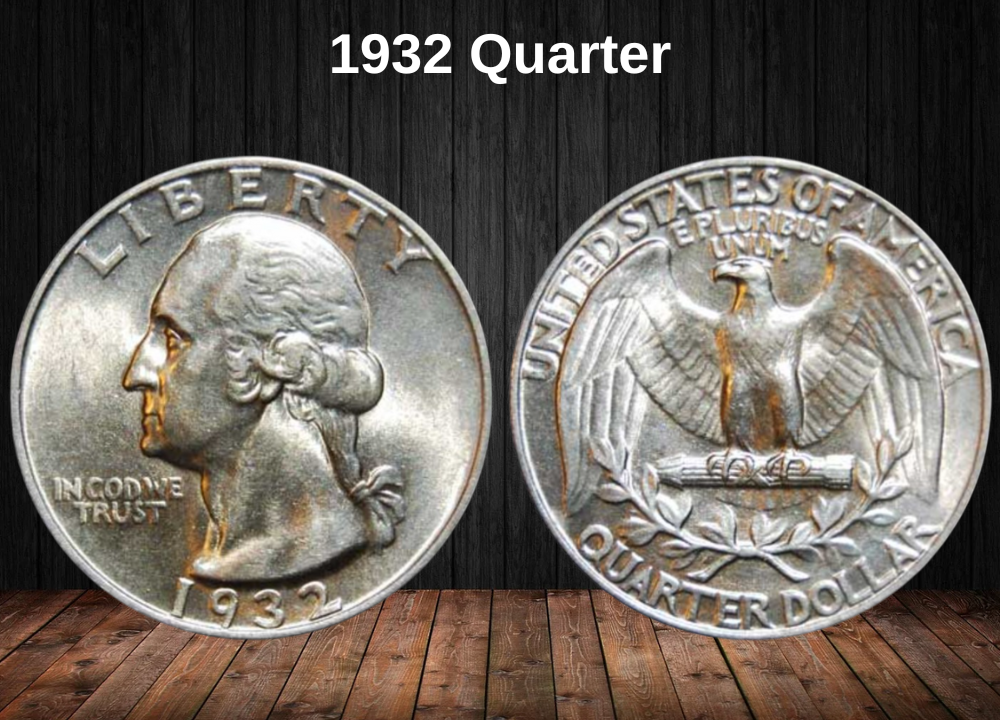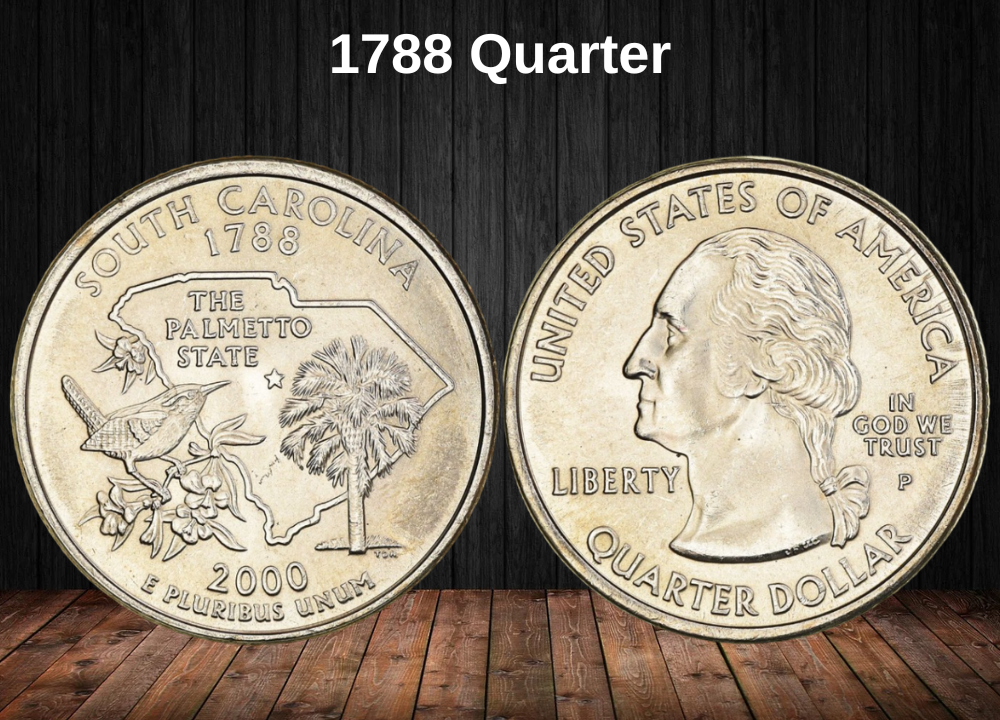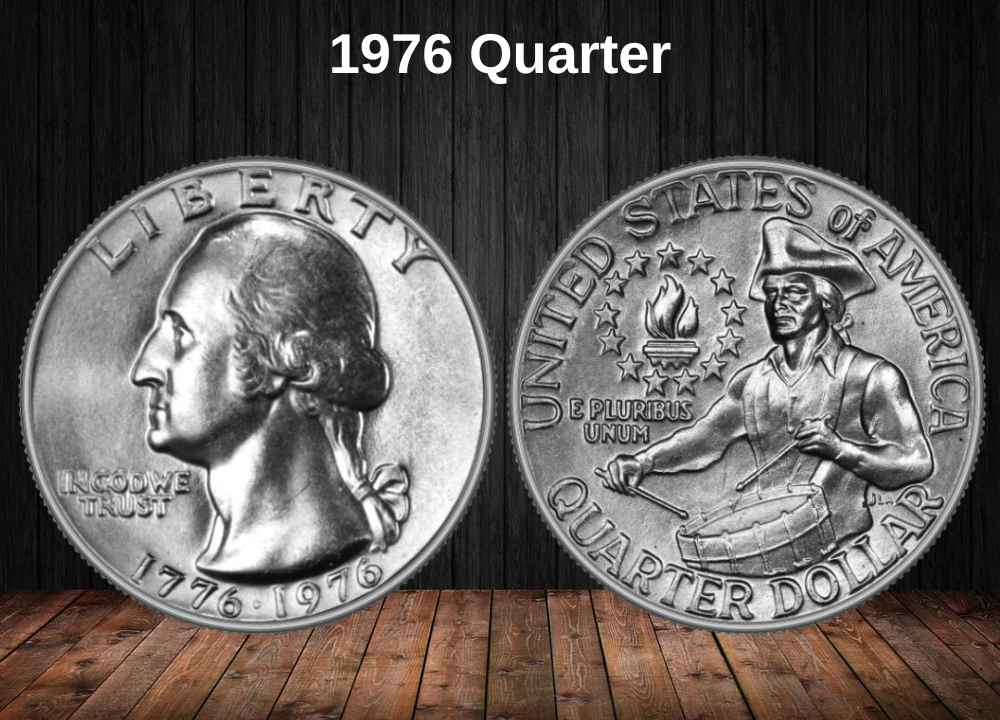The 1968 Washington quarter represents a pivotal moment in U.S. coinage history. After three years without mint marks (1965–1967), the Mint finally restored them in 1968, reintroducing the small letters that collectors had long valued for identifying a coin’s origin.
This year also marked another turning point: the end of the experimental Special Mint Set (SMS) program and the return of proof coins, now struck exclusively at the San Francisco Mint. These proof issues gave collectors access once again to mirror-like finishes and cameo contrasts that had been absent since 1964.
For circulation, both the Philadelphia and Denver Mints produced large numbers of clad quarters. While most circulated examples remain worth only face value, higher-grade specimens and proofs with strong cameo or deep cameo contrast can be worth multiples of their original denomination.
In short, the 1968 quarter is more about transitions and returns—a resumption of mint marks, the comeback of proofs, and the solidification of the copper-nickel clad era that had begun in 1965.
1968 Quarter Value Chart
(Price by 1–70 Grade — Latest Auction Records Included)
| Type | Good | Fine | AU | MS | PR |
|---|---|---|---|---|---|
| 1968 No Mint Mark Quarter Value | $0.25 | $0.29 | $0.67 | $32.57 | — |
| 1968 D Quarter Value | $0.25 | $0.29 | $0.67 | $10.86 | — |
| 1968 S Proof Quarter Value | — | — | — | — | $6.12 |
| 1968 S CAM Quarter Value | — | — | — | — | $10.00 |
| 1968 S DCAM Quarter Value | — | — | — | — | $17.71 |
Top 7 Most Valuable 1968 Quarters Worth Money
| Rank | Coin / Variety | Grade | Auction Record Price |
|---|---|---|---|
| 1 | 1968 No Mint Mark Quarter (Philadelphia) | MS 68 | $9,000 |
| 2 | 1968-D Quarter | MS 68 | $4,300 |
| 3 | 1968-S Proof Quarter (Deep Cameo) | PR 69 DCAM | $2,100 |
| 4 | 1968-S Proof Quarter (Cameo) | PR 69 CAM | $1,150 |
| 5 | 1968 No Mint Mark Quarter | MS 67+ | $750 |
| 6 | 1968-D Quarter | MS 67+ | $460 |
| 7 | 1968-S Proof Quarter (Regular Proof) | PR 69 | $250 |
History Of The 1968 Quarter
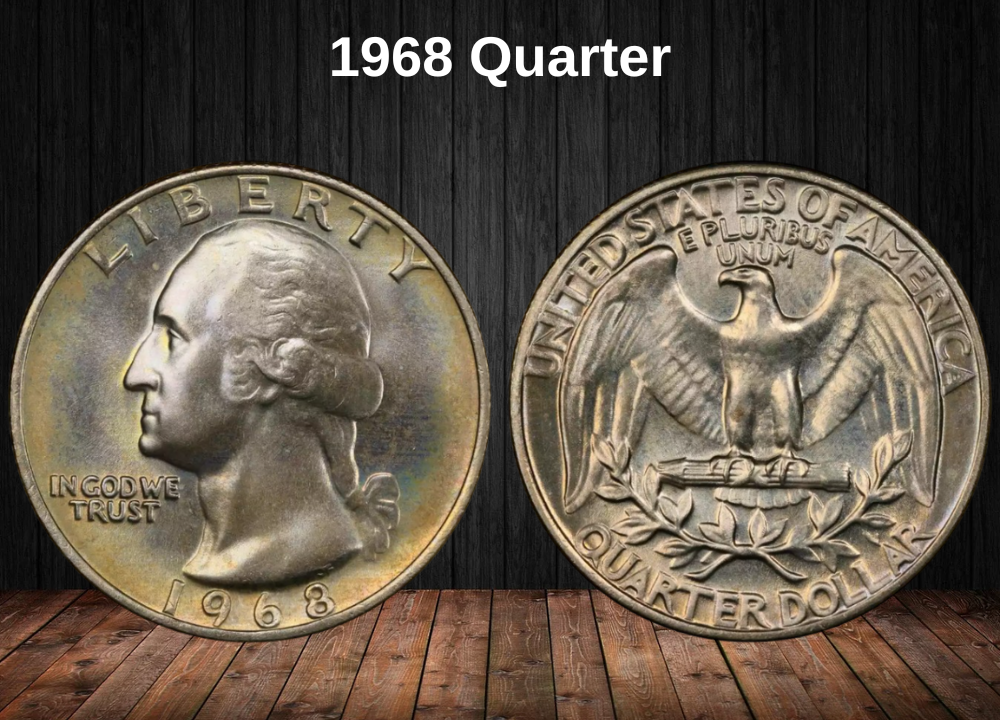
The 1968 Washington quarter sits at a turning point in American coinage history. After three years of unusual minting practices caused by the national coin shortage and the silver crisis, 1968 marked a return to tradition while also ushering in new standards for modern U.S. coins.
From 1965 to 1967, the U.S. Mint had suspended the use of mint marks in an effort to discourage coin hoarding. Collectors had been stripping silver coins from circulation, and the Mint hoped that removing mint marks would make quarters seem less special. By 1968, however, mint marks were restored—Philadelphia issues carried no mark as usual, Denver coins bore a “D,” and San Francisco returned with an “S” on its new proof-only coinage.
1968 also marked the official end of the Special Mint Set (SMS) program, which had temporarily replaced proof coins from 1965 through 1967. With the reopening of the San Francisco Assay Office as the official proof-coin facility, proof production resumed and gave collectors the mirror-like strikes they had long awaited.
Economically, the year reinforced the transition to copper-nickel clad coinage that had begun in 1965. Rising silver prices had made 90% silver quarters impractical to produce for circulation, and 1968 quarters continued the clad tradition with 91.67% copper and 8.33% nickel. This composition is still in use today.
The 1968 quarter therefore carries a dual legacy: a return to mint marks and proof coinage, while fully embracing the copper-nickel era. For collectors, it represents both continuity and change, a coin firmly rooted in its history yet essential to modern U.S. numismatics.
Key Features of the 1968 Quarter
The 1968 Washington Quarter continued the iconic design by sculptor John Flanagan, but with one historic change: the return of mint marks on U.S. coinage. While the artwork itself remained the same, the placement of these marks and the coin’s copper-nickel composition make 1968 quarters stand out for collectors.
The Obverse of the 1968 Quarter
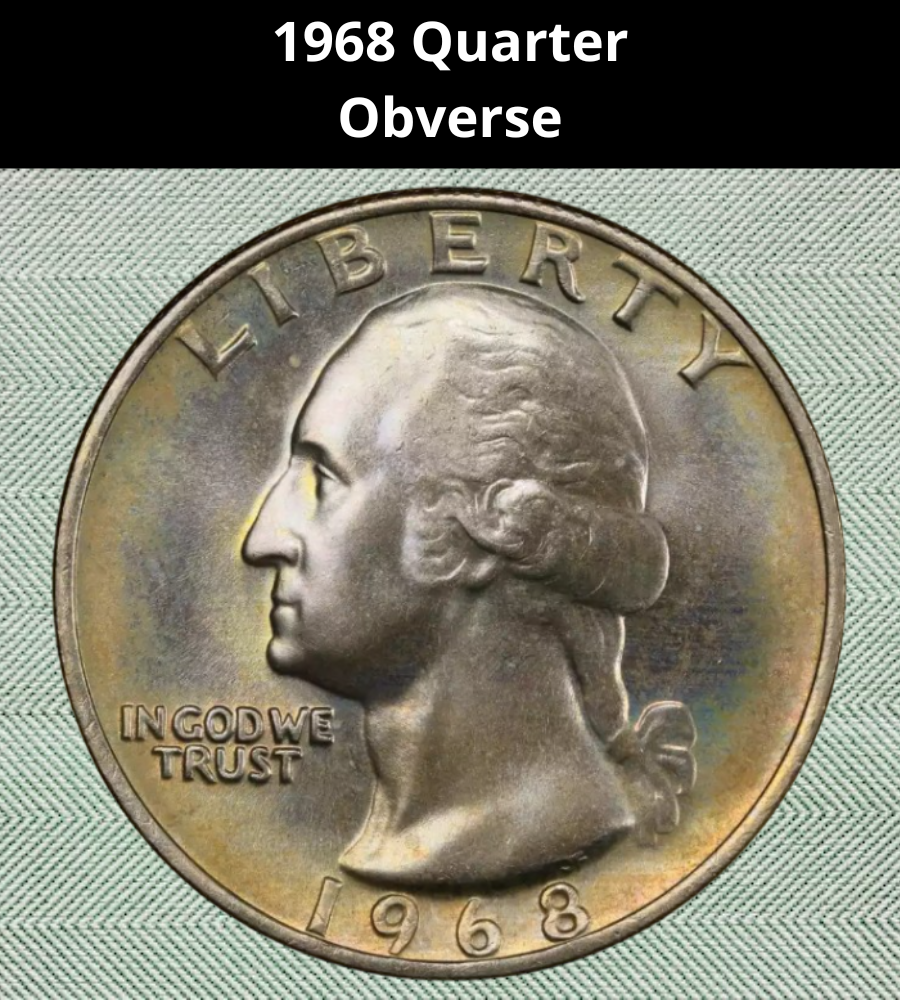
The obverse displays the familiar left-facing bust of George Washington, first introduced in 1932 for his bicentennial.
- Above his head is the word LIBERTY.
- To the left of his profile appears the motto IN GOD WE TRUST.
- At the bottom rim sits the date, 1968.
- The designer’s initials JF (for John Flanagan) are engraved at the neckline truncation.
This side is virtually unchanged from earlier quarters, except that Philadelphia coins once again lacked mint marks, while Denver coins carried a small “D” to the right of Washington’s ponytail.
The Reverse of the 1968 Quarter
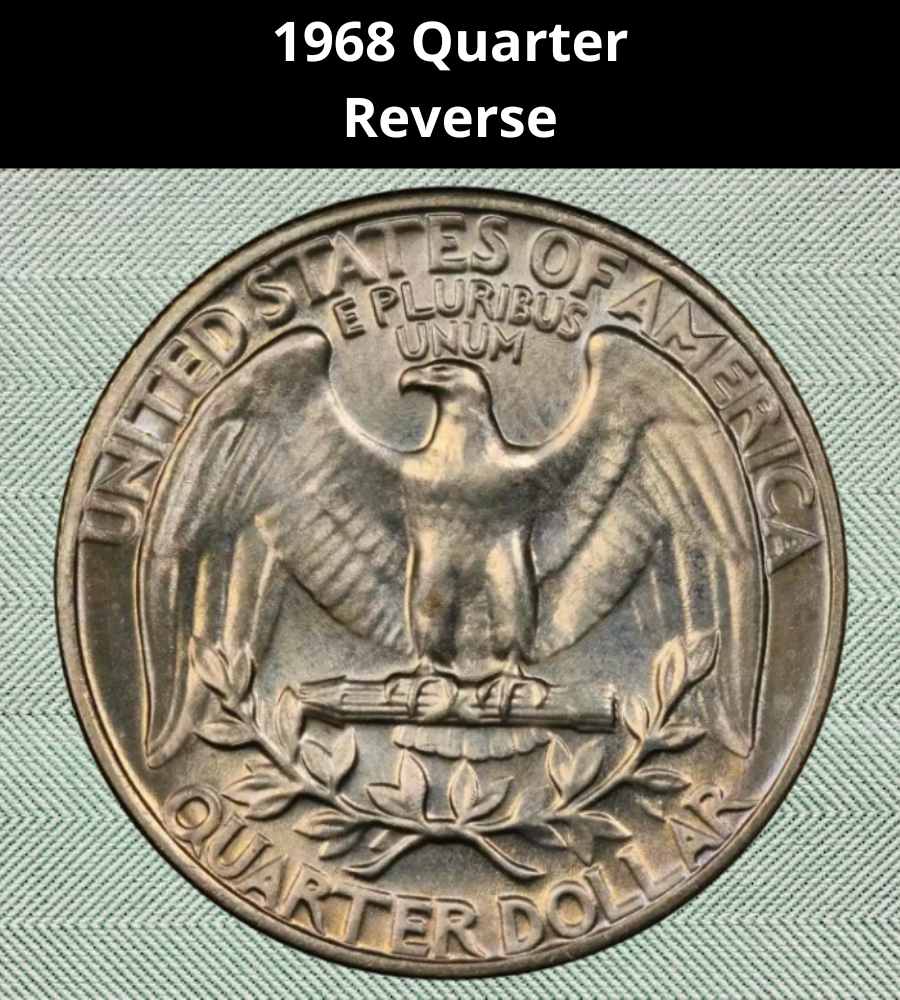
The reverse continues the classic heraldic eagle design:
- The eagle is perched on a bundle of arrows, wings spread wide as a symbol of defense and national strength.
- Two olive branches curve upward beneath the eagle, representing peace.
- Across the top rim is UNITED STATES OF AMERICA, with E PLURIBUS UNUM (“From many, one”) just below it.
- Along the bottom rim is the denomination, QUARTER DOLLAR.
- On proof coins minted in San Francisco, a clear “S” mint mark appears beneath the wreath, confirming their origin.
Other Features of the 1968 Quarter
- Composition: 91.67% copper and 8.33% nickel (clad over a pure copper core).
- Weight: 5.67 grams.
- Diameter: 24.3 mm (0.955 inches).
- Thickness: 1.75 mm (0.069 inches).
- Edge: Reeded with 119 reeds.
This copper-nickel composition gave the coins a lighter color and a distinctive “clad ring” compared to the warm tone of silver coins. For many collectors, spotting the copper stripe on the edge became the simplest way to distinguish post-1965 clad quarters from earlier 90% silver examples.
1968 Quarter Grading
| Grade | Description | Typical Value |
|---|---|---|
| Good (G-4) – Fine (F-12) | Heavy wear on Washington’s hair and cheek; date and lettering visible but flat. Eagle feathers mostly worn away. | $0.25 (face value) |
| Very Fine (VF-20) – Extremely Fine (EF-40) | Moderate wear; some hair strands and eagle wing details remain visible. | $0.29 – $0.67 |
| About Uncirculated (AU-50 to AU-58) | Light friction on Washington’s cheek and eagle’s breast; traces of mint luster may survive. | $0.67 – $1.50 |
| Mint State (MS-60 to MS-63) | Full mint luster but with noticeable bag marks or scuffs. | $5 – $15 |
| Mint State (MS-64 to MS-65) | Strong luster, sharper strike, fewer marks; Denver issues scarcer in these grades. | $20 – $40+ |
| Mint State (MS-66 and above) | Near-flawless surfaces with exceptional eye appeal; rare for 1968 circulation strikes. | $50 – $150+ |
| Proof (PR-60 to PR-65) | Mirror-like surfaces; minimal cameo contrast. | $4 – $6 |
| Cameo (CAM) | Frosted portrait/eagle with reflective fields; scarcer than regular proofs. | $10 – $15 |
| Deep Cameo (DCAM) | Intense black-and-white contrast with heavily frosted devices and mirrored fields; most desirable. | $18 – $30+ |
1968 No Mint Mark Quarter Value
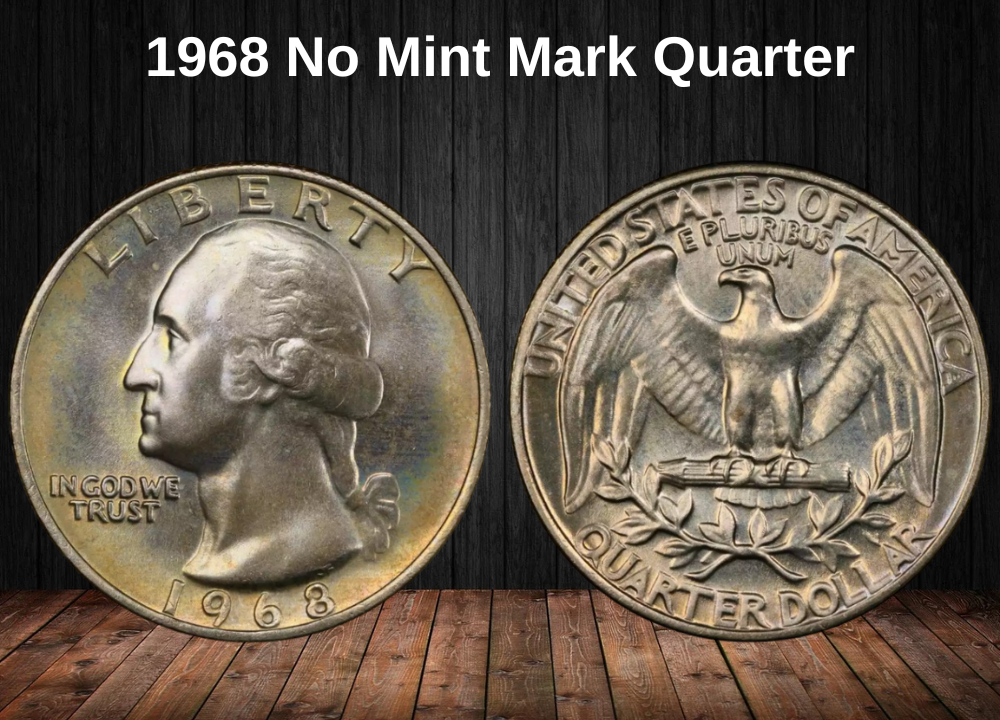
The 1968 No Mint Mark quarter was struck at the Philadelphia Mint, which had just reintroduced mint marks nationwide after their suspension between 1965 and 1967. Interestingly, Philadelphia quarters continued the tradition of having no mint mark, making them easy to identify compared to Denver (“D”) or San Francisco (“S”) issues.
With a total mintage of over 220 million pieces, these copper-nickel clad quarters are common in circulated grades. However, their value lies in high-quality Mint State examples, particularly MS-66 and higher, which are much scarcer due to heavy handling and bag marks during distribution.
The highest auction records come from MS-68 coins, which are nearly flawless and extremely rare, making them prized by registry collectors.
1968 No Mint Mark Quarter Value/Grade Chart
(Latest Auction Records Included)
| Grade | Value Range |
|---|---|
| Good (G-4) | $0.25 (face value) |
| Fine (F-12) | $0.29 |
| Extremely Fine (EF-40) | $0.67 |
| About Uncirculated (AU-50) | $1.50 |
| Mint State (MS-60) | $5.00 |
| Mint State (MS-63) | $12.50 |
| Mint State (MS-65) | $32.57 |
| Mint State (MS-66) | $75 – $125 |
| Mint State (MS-67) | $300 – $600 |
| Mint State (MS-68) | $9,000 (auction record) |
1968-D Quarter Value
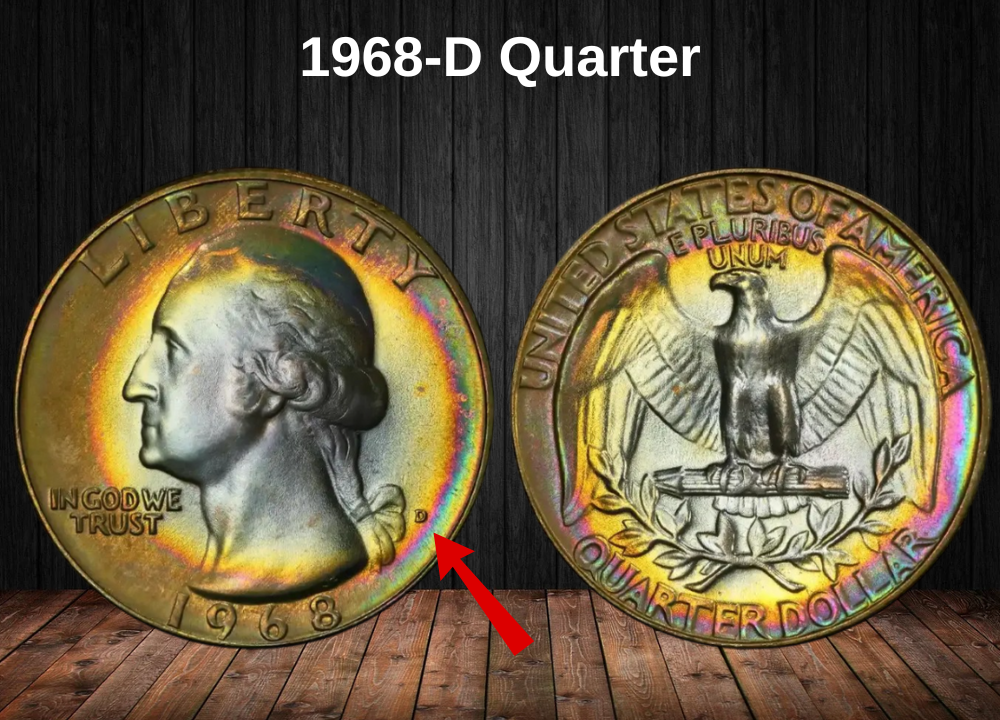
The 1968-D quarter was struck at the Denver Mint, with an enormous mintage of over 101 million coins. These pieces were part of the first full year after the U.S. Mint reinstated mint marks on coins, making the small “D” below the eagle on the reverse a key identifier.
While common in circulation, the real challenge lies in finding high-grade mint state examples. Most 1968-D quarters were heavily used in commerce and show significant bag marks and weak strikes, which makes coins in MS-66 and higher genuinely scarce.
The auction record for a MS-68 example reached over $4,000, reflecting how rare top-condition specimens are despite the huge production.
1968-D Quarter Value/Grade Chart
(Latest Auction Records Included)
| Grade | Value Range |
|---|---|
| Good (G-4) | $0.25 (face value) |
| Fine (F-12) | $0.29 |
| Extremely Fine (EF-40) | $0.67 |
| About Uncirculated (AU-50) | $1.25 |
| Mint State (MS-60) | $4.00 |
| Mint State (MS-63) | $8.00 |
| Mint State (MS-65) | $10.86 |
| Mint State (MS-66) | $50 – $125 |
| Mint State (MS-67) | $250 – $500 |
| Mint State (MS-68) | $4,300 (auction record) |
1968-S Proof Quarter Value
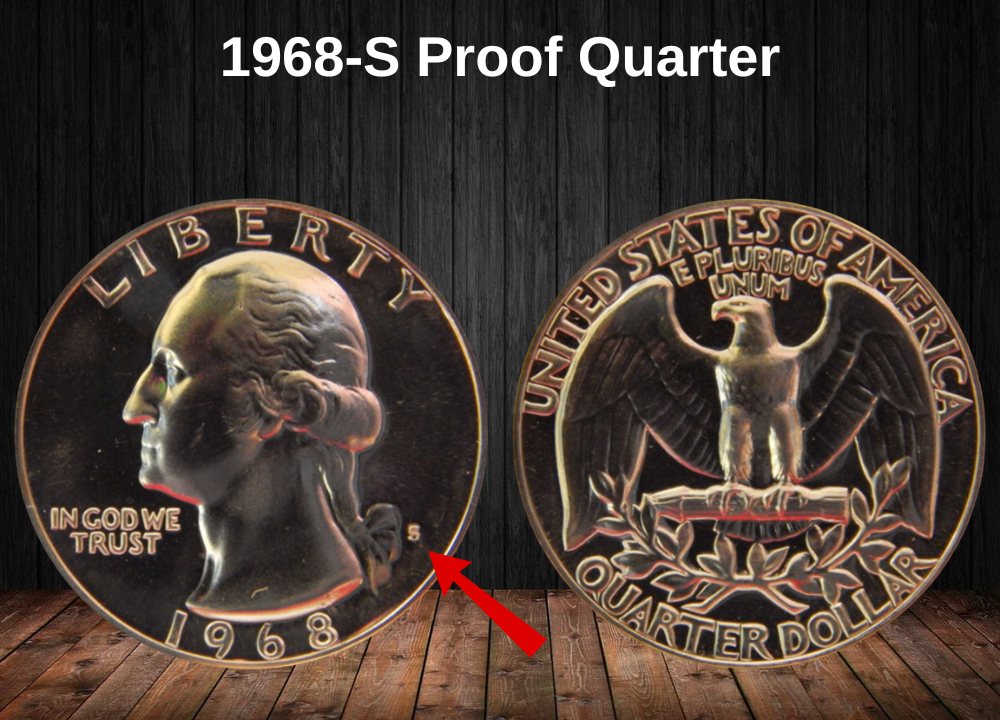
The 1968-S Proof Quarter marked a historic return to proof coinage after the three-year hiatus (1965–1967) when the U.S. Mint replaced proofs with Special Mint Sets (SMS). These proofs were struck exclusively at the San Francisco Mint, which became the official producer of proof coins moving forward.
With a mintage of 3,041,506, the 1968-S proof quarter is relatively common among collectors. However, the coin’s value depends heavily on its surface quality and whether it achieves the Cameo (CAM) or Deep Cameo (DCAM) designations.
Standard proofs without strong contrast remain affordable, often trading for just a few dollars, making them an excellent entry point for new collectors. But higher-grade proofs (PR-69) or those with cameo effects are far more valuable.
1968-S Proof Quarter Value/Grade Chart
(Latest Auction Records Included)
| Grade | Value Range |
|---|---|
| Proof (PR-60) | $2.00 |
| Proof (PR-63) | $3.50 |
| Proof (PR-65) | $5.00 |
| Proof (PR-67) | $6.12 |
| Proof (PR-68) | $8.00 – $12.00 |
| Proof (PR-69) | $20 – $40 |
| Proof (PR-70) | Extremely Rare – up to $500+ |
1968-S CAM Quarter Value
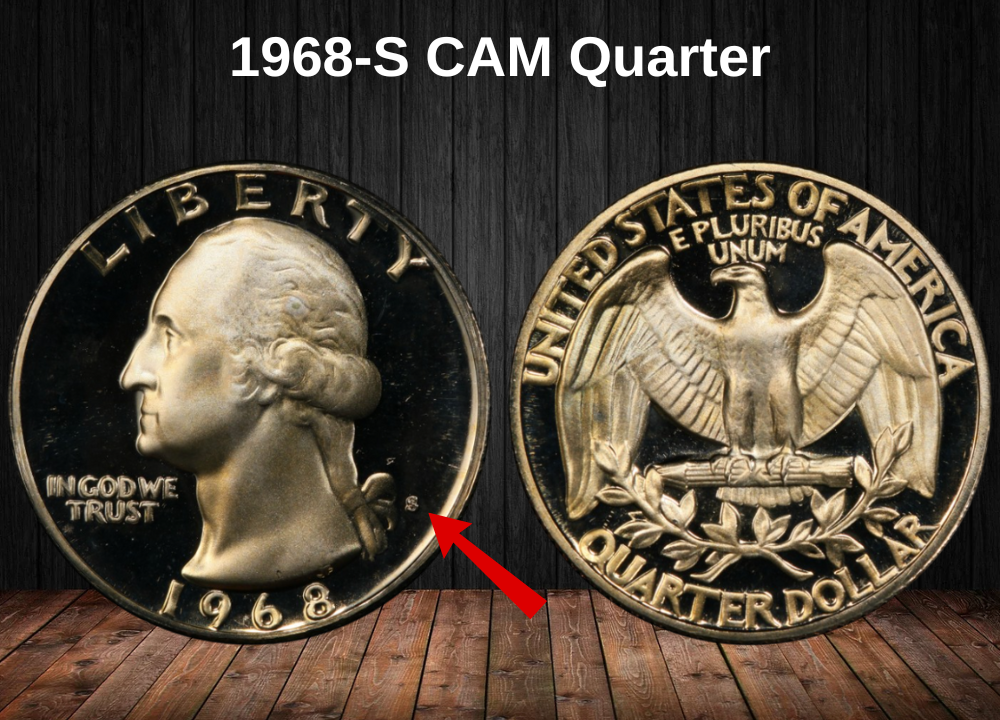
The 1968-S CAM (Cameo) Quarter is a premium variety of the proof issues struck in San Francisco. These coins display a frosted finish on the raised devices (Washington’s portrait and the eagle) that contrasts beautifully against the mirror-like fields.
Only a portion of the 3 million proof quarters struck in 1968 earned the Cameo designation, since the effect depended on how fresh and well-prepared the dies were. Early strikes from newly polished dies typically produced the strongest frosted contrast, while later strikes lost much of that effect.
Cameo-designated proofs are less common than standard proofs, but more available than the highly coveted Deep Cameo (DCAM) coins. Collectors prize them as the “middle tier” of proof quality, offering superior eye appeal at modest premiums.
1968-S CAM Quarter Value/Grade Chart
(Latest Auction Records Included)
| Grade | Value Range |
|---|---|
| Proof CAM (PR-65) | $6.00 |
| Proof CAM (PR-67) | $8.00 – $12.00 |
| Proof CAM (PR-68) | $15.00 – $20.00 |
| Proof CAM (PR-69) | $25.00 – $50.00 |
| Proof CAM (PR-70) | Rare – $100+ |
1968-S DCAM Quarter Value
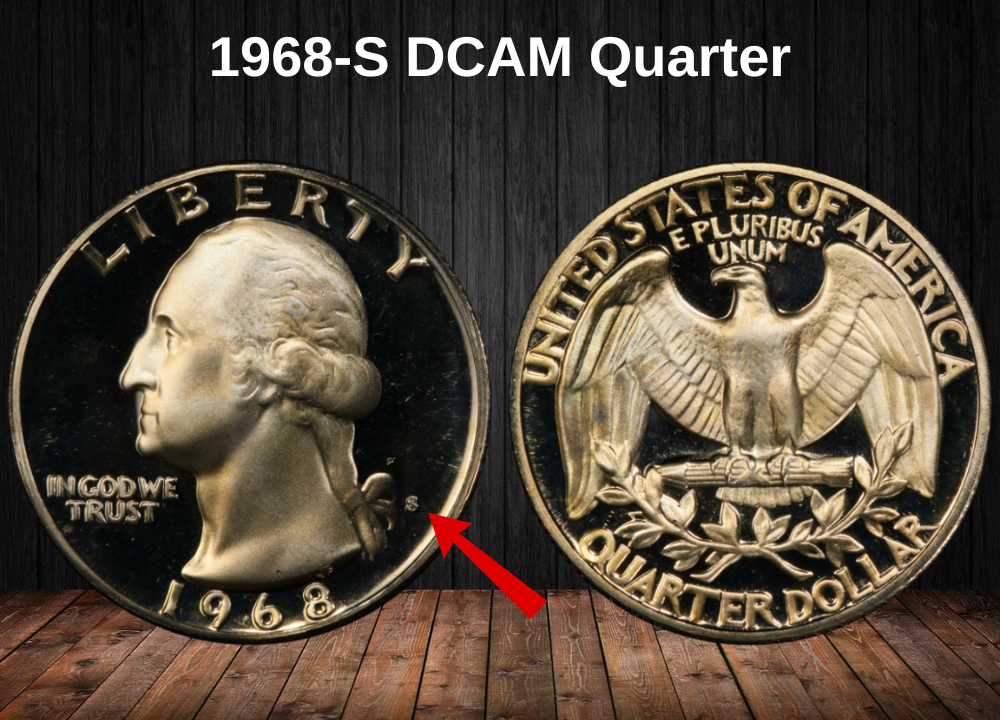
The 1968-S DCAM (Deep Cameo) Quarter represents the highest quality of proof strikes from the San Francisco Mint in 1968. These coins feature intensely frosted devices that stand out in bold contrast against the deeply mirrored fields, creating the dramatic black-and-white effect that collectors love.
Unlike regular proofs or even Cameos, only a small fraction of the 3 million proof quarters struck achieved DCAM designation. The effect required perfectly prepared dies and ideal striking conditions, making these coins much scarcer.
Deep Cameo examples are highly sought after in grades PR-68 and PR-69, where they command strong premiums. The elusive PR-70 DCAM is considered nearly perfect and can fetch significant sums at auction.
1968-S DCAM Quarter Value/Grade Chart
(Latest Auction Records Included)
| Grade | Value Range |
|---|---|
| Proof DCAM (PR-65) | $10.00 |
| Proof DCAM (PR-67) | $12.00 – $15.00 |
| Proof DCAM (PR-68) | $18.00 – $25.00 |
| Proof DCAM (PR-69) | $30.00 – $50.00 |
| Proof DCAM (PR-70) | Rare – $200+ |
Rare 1968 Quarter Error List
1. 1968-D DDR FS-801
The 1968-D Doubled Die Reverse (DDR) FS-801 shows dramatic doubling on the reverse design. The strongest doubling appears in “UNITED STATES OF AMERICA”, “QUARTER DOLLAR”, and in parts of the eagle’s feathers. The thickened, shadow-like letters are easily visible under magnification.
Value Chart – 1968-D DDR FS-801
| Grade | Value Range |
|---|---|
| VF-20 | $15 – $25 |
| EF-40 | $30 – $50 |
| AU-50 | $60 – $100 |
| MS-60 | $125 – $175 |
| MS-63 | $200 – $300 |
| MS-65 | $400 – $650 |
| MS-66 | $1,000+ |
2. 1968-D DDO FS-101
The 1968-D Doubled Die Obverse (DDO) FS-101 features doubling on the obverse inscriptions and parts of Washington’s profile. Most dramatic is the doubling in “LIBERTY” and “IN GOD WE TRUST”, as well as in the date numerals. This makes it one of the most desirable 1968-D varieties.
Value Chart – 1968-D DDO FS-101
| Grade | Value Range |
|---|---|
| VF-20 | $20 – $35 |
| EF-40 | $40 – $70 |
| AU-50 | $90 – $140 |
| MS-60 | $175 – $250 |
| MS-63 | $275 – $400 |
| MS-65 | $600 – $900 |
| MS-66 | $1,200+ |
3. 1968-S Proof DDO FS-101
Among proofs, the 1968-S DDO FS-101 is especially popular. The doubling is visible in “LIBERTY”, “IN GOD WE TRUST”, and in Washington’s facial features. Proof errors are rarer than circulation strike errors, and this one is especially valuable in Cameo (CAM) and Deep Cameo (DCAM) designations.
Value Chart – 1968-S Proof DDO FS-101
| Grade | Value Range |
|---|---|
| PR-64 | $50 – $75 |
| PR-65 | $90 – $120 |
| PR-66 | $150 – $225 |
| PR-67 | $250 – $400 |
| PR-68 | $600 – $900 |
| PR-69 CAM/DCAM | $1,200 – $2,000+ |
4. 1968-S Proof DDR FS-801
The 1968-S Proof DDR FS-801 displays strong doubling on the reverse inscriptions, especially “UNITED STATES OF AMERICA” and “QUARTER DOLLAR.” The eagle’s wing feathers may also show clear separation lines. As with the proof DDO, Cameo and Deep Cameo examples command the highest premiums.
Value Chart – 1968-S Proof DDR FS-801
| Grade | Value Range |
|---|---|
| PR-64 | $40 – $60 |
| PR-65 | $80 – $120 |
| PR-66 | $150 – $200 |
| PR-67 | $225 – $350 |
| PR-68 | $500 – $750 |
| PR-69 CAM/DCAM | $1,000 – $1,600+ |
5. 1968-D RPM FS-501
The 1968-D RPM (Repunched Mint Mark) FS-501 shows a secondary “D” mint mark punched slightly north of the primary D. This creates a doubled, shadow-like appearance on the mint mark below the eagle. RPMs are popular with variety collectors and are among the easier errors to spot.
Value Chart – 1968-D RPM FS-501
| Grade | Value Range |
|---|---|
| VF-20 | $15 – $25 |
| EF-40 | $30 – $50 |
| AU-50 | $60 – $90 |
| MS-60 | $100 – $150 |
| MS-63 | $175 – $250 |
| MS-65 | $400 – $600 |
| MS-66 | $800+ |
6. 1968-D RPM FS-502
The 1968-D RPM (Repunched Mint Mark) FS-502 shows a slightly different alignment than FS-501, with the secondary mint mark shifted in another direction (often southeast). These subtle differences create distinct catalogued varieties, both of which attract strong collector interest.
Value Chart – 1968-D RPM FS-502
| Grade | Value Range |
|---|---|
| VF-20 | $10 – $20 |
| EF-40 | $25 – $40 |
| AU-50 | $50 – $80 |
| MS-60 | $100 – $140 |
| MS-63 | $160 – $225 |
| MS-65 | $350 – $500 |
| MS-66 | $700+ |
7. 1968 Transitional Error (Clad on Silver Planchet)
A very rare and dramatic error from 1968 involves a quarter struck on a leftover 90% silver planchet from pre-1965 stock. These transitional errors should weigh around 6.25 grams instead of the standard 5.67 grams. Authentication is essential, as these errors are worth thousands of dollars to advanced collectors.
Value Chart – 1968 Silver Transitional Error
| Grade | Value Range |
|---|---|
| AU-50 | $2,500 – $3,500 |
| MS-60 | $4,000 – $6,000 |
| MS-63 | $7,500 – $9,000 |
| MS-65 | $12,000 – $15,000+ |
Where to Sell Your Quarter Coin?
Now that you know the value of your quarter, the next step is deciding where to sell it. There are several trusted options—both online and in person—that can help you get the best price depending on your coin’s rarity and condition.
To see the full list of recommended places, along with their advantages and disadvantages, check our complete guide on where to sell your quarter coins.
FAQ About The 1968 Quarter
1) What is the composition of the 1968 quarter?
- Outer layers: 75% copper, 25% nickel
- Core: Pure copper
- Weight: 5.67 g
- Diameter: 24.3 mm
- Edge: Reeded with visible copper core
2) Why is the 1968 quarter historically significant?
- First year after the 1965–1967 coin shortage experiment, where mintmarks and Proof Sets were suspended.
- Mintmarks returned in 1968 and were now placed on the obverse (front), to the right of Washington’s ponytail, where they remain today.
- Proof Set production resumed at the San Francisco Mint (with “S” mintmark).
3) Where was it minted and how many?
- Philadelphia (no mintmark): 220,731,500
- Denver (“D”): 101,534,000
- San Francisco (“S” Proof only): 3,041,506
4) Are 1968 quarters rare?
- Circulated examples are common.
- Scarcity exists in:
- MS-67+ business strikes
- Proofs with strong Cameo or Deep Cameo contrast
- Error coins (wrong planchets, double strikes, clipped planchets).
5) What is the value of a 1968 quarter?
- Circulated: 25¢ (face value)
- MS-65: $8–12
- MS-67: $125–250+
- Proof PR-65: $5–8
- Proof PR-69 DCAM: $200–400+
6) What varieties or errors should I look for?
- 1968-D RPM (Repunched Mintmark): Popular with specialists.
- DDOs/DDRs: Minor doubled dies known.
- Wrong planchets: Some struck on dime or foreign stock.
- SMS-style surfaces: Occasionally seen, though true SMS sets ended in 1967.
7) How do I tell a Proof 1968-S from a circulation strike?
- Proofs (San Francisco only) have mirrorlike fields, squared rims, and sometimes frosted devices (Cameo/Deep Cameo).
- Business strikes show normal luster and circulation surfaces.
8) Why do collectors pursue the 1968 quarter?
- It marks the return of mintmarks and Proof Sets, ending a three-year gap.
- Proofs from this year can be spectacular in Deep Cameo.
- Denver RPMs and other errors add cherrypicking opportunities.
- High-grade registry examples are tough, making them desirable despite high mintages.

